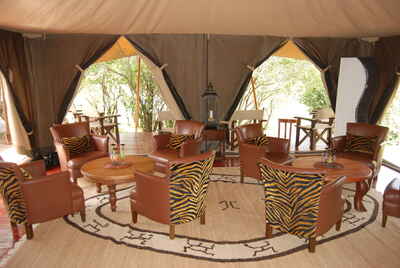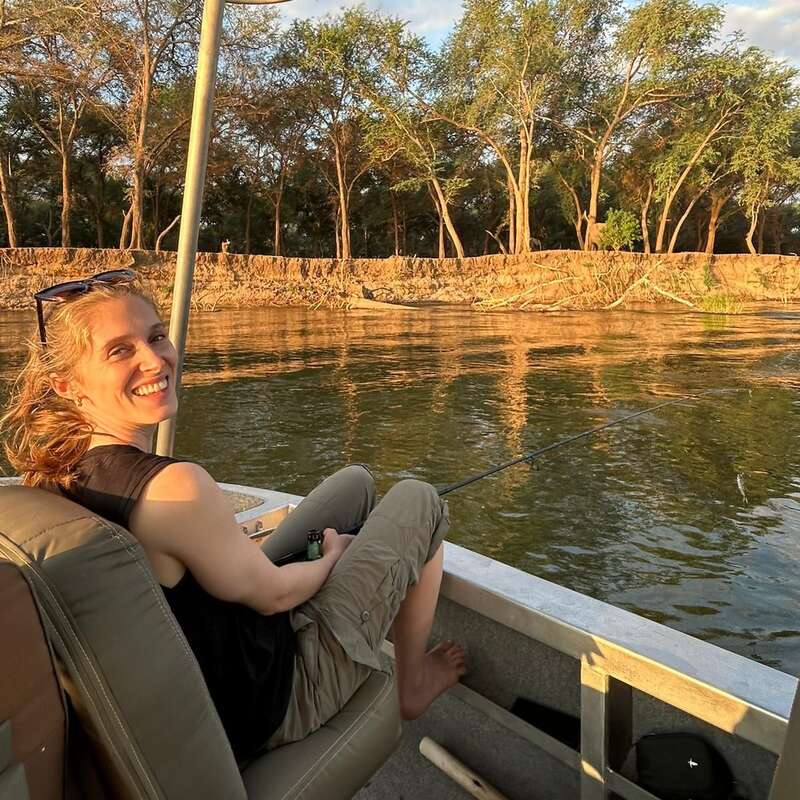About Mara Ngenche Safari Camp
Tucked into quite thick indigenous riverine forest, Mara Ngenche Safari Camp is situated at the confluence ...
... of the Mara and Talek rivers. Historically this was an important place, where the local Maasai community would come to share loot they had raided from neighbouring tribes – hence the name Ngenche – meaning 'to share' in the Maasai language. The camp has been built to disturb as little of the surrounding bush as possible.
Ngenche is a small tented camp, but unusually for the Mara, it is not hosted. The staff here are exceptionally friendly and the manager very approachable, but guests have a higher degree of independence than at many of the other places we feature of this size. This, twinned with the traditional style of the rooms, makes it suitable for those who want a bit more autonomy but without having to opt for a large hotel-like property.
Our view
Ngenche is a small tented camp, but unusually for the Mara, it is not hosted. The staff here are exceptionally friendly and the manager very approachable, but guests have a higher degree of independence than at many of the other places we feature of this size. This, twinned with the traditional style of the rooms, makes it suitable for those who want a bit more autonomy but without having to opt for a large hotel-like property.
Accommodation
12 tented rooms
Children
Best for 12+
Open
Open year round
Activities

4WD Safari

Birdwatching

Cultural excursion

Hot air ballooning

Private activities
Traveller reviews of Mara Ngenche Safari Camp
2 real, un-edited reviews from Expert Africa's travellers.
Arrived 14 Sep 2016, 3 nights
"Mara Ngenche Safari camp"
Overall rating: Excellent
Arrived 5 Sep 2015, 2 nights
"Locally-run perfectly located for crossings"
Overall rating: Good
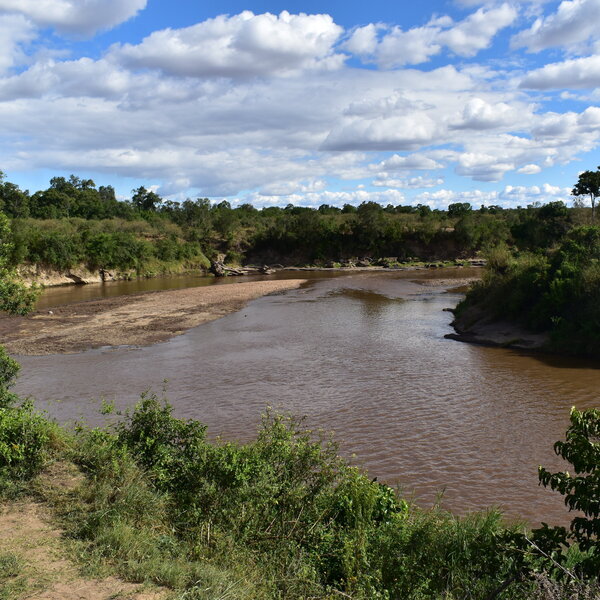
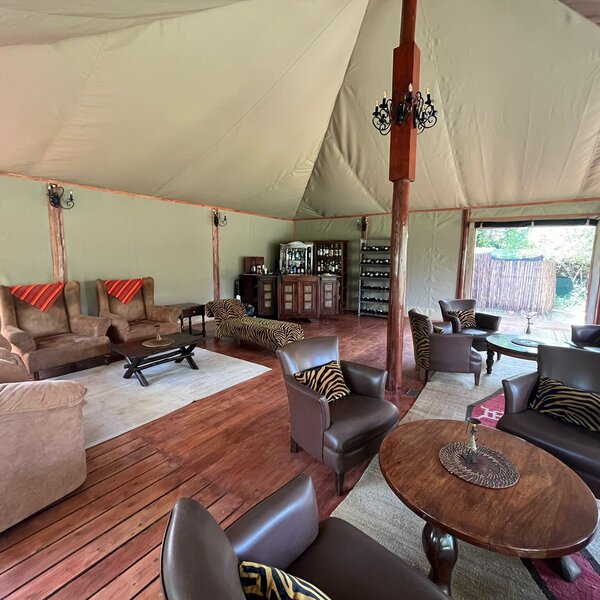
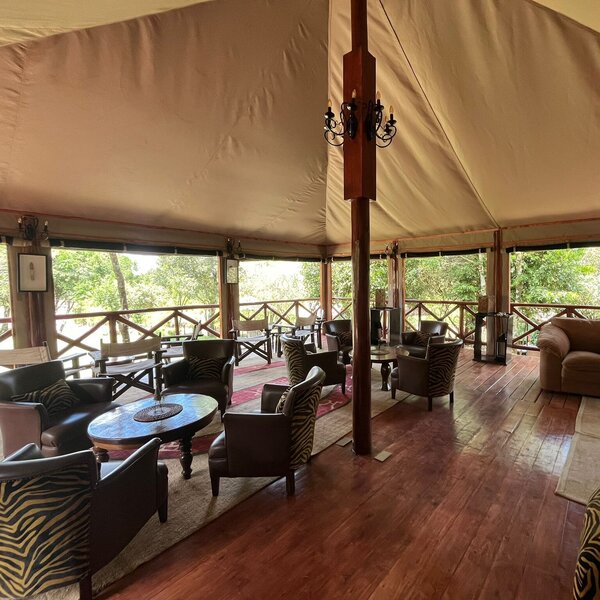
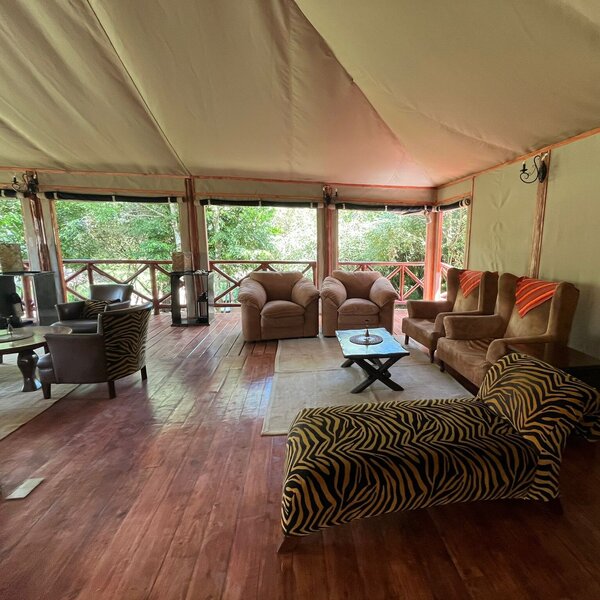
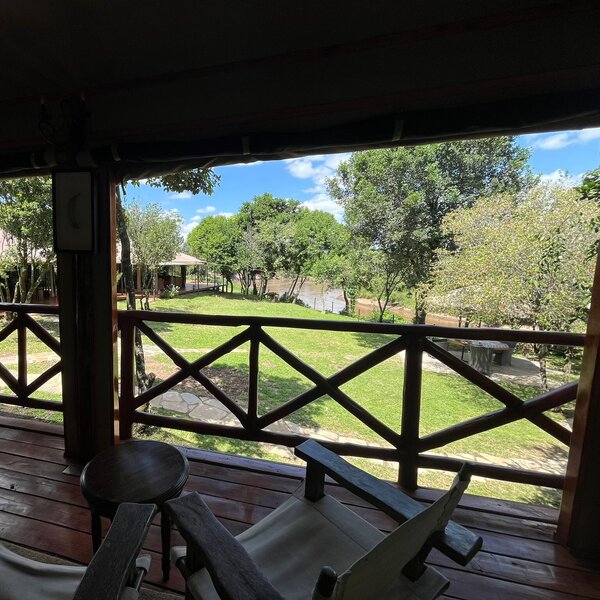
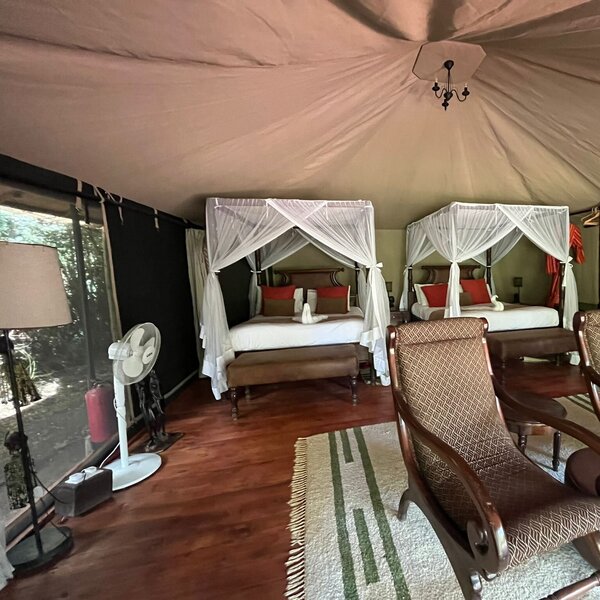
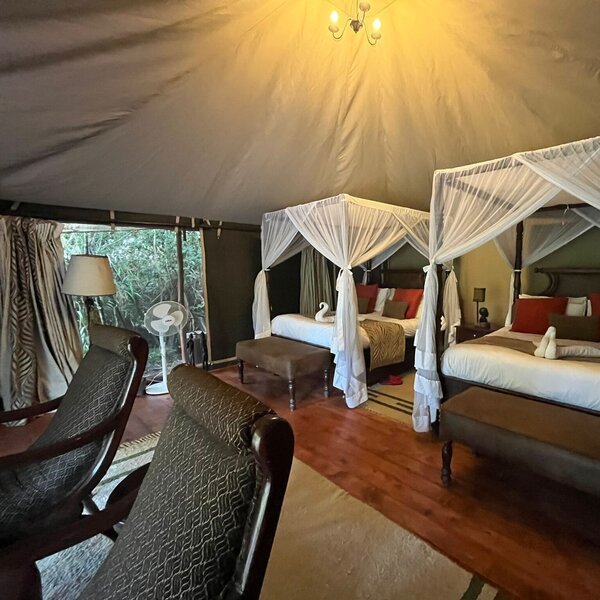
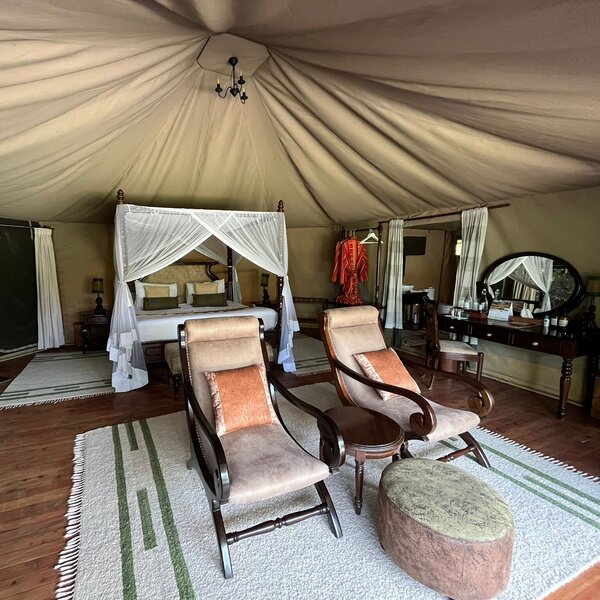
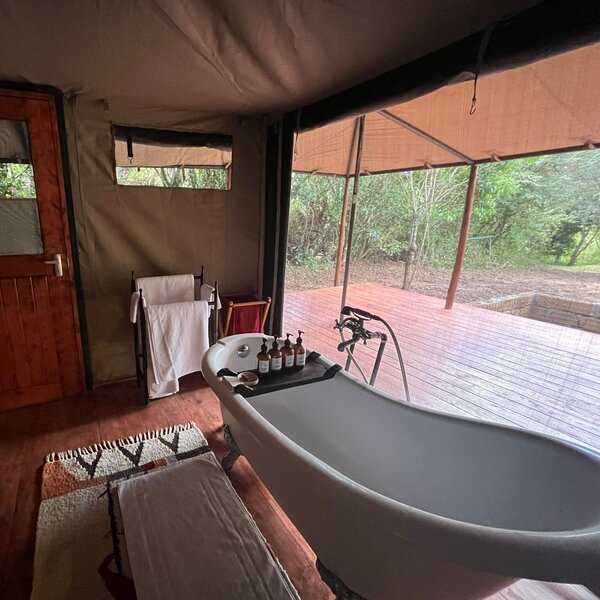
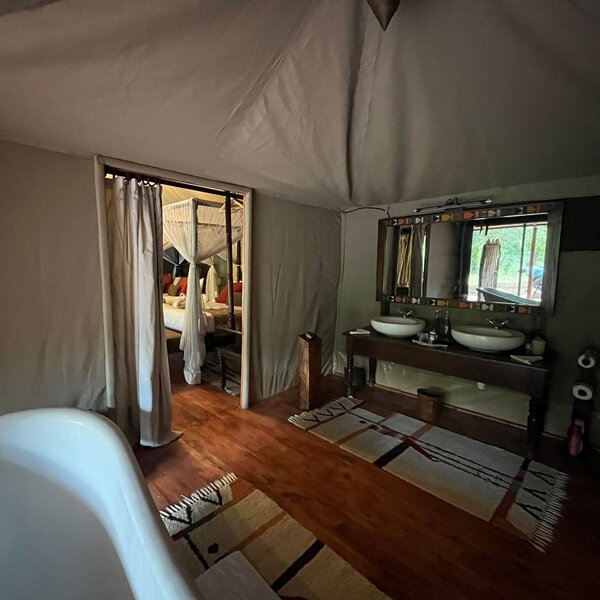
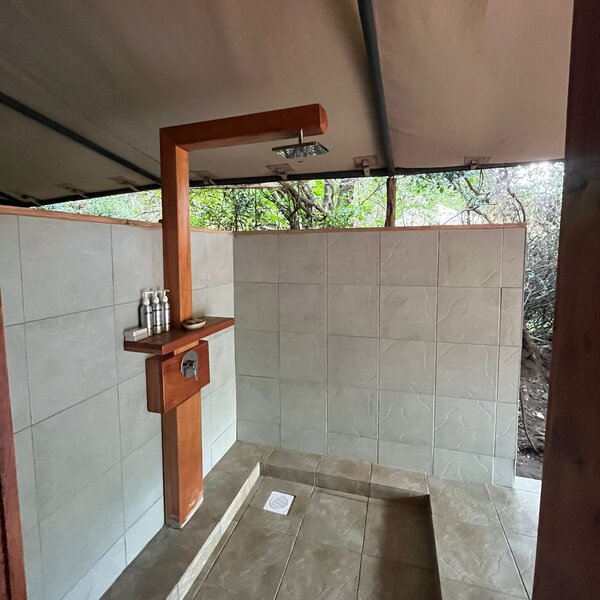
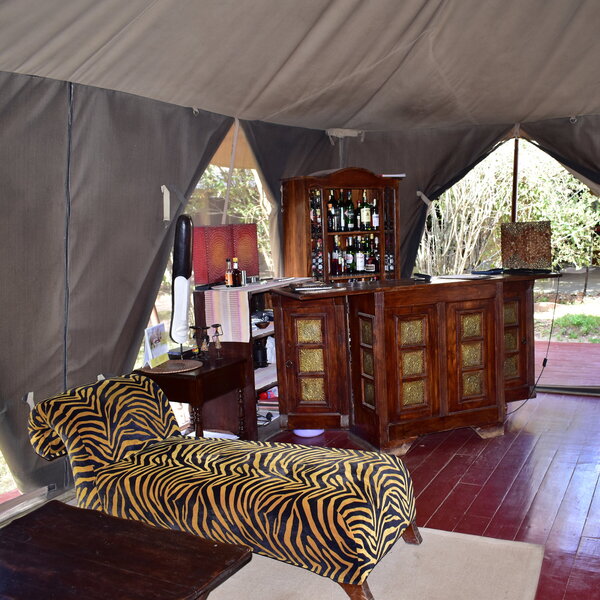
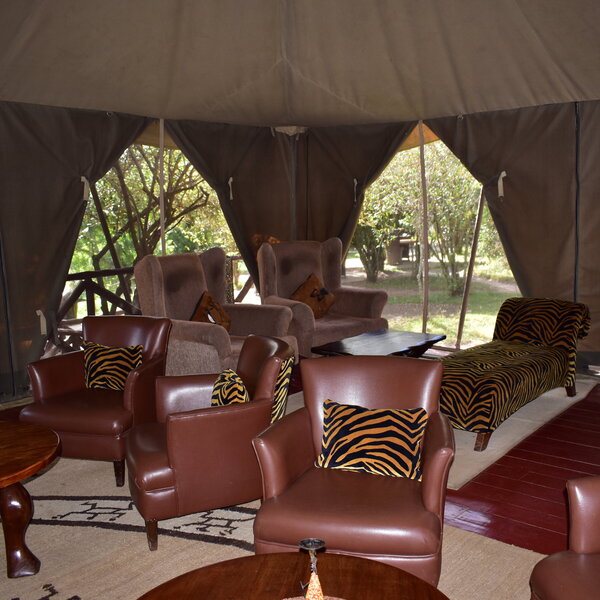
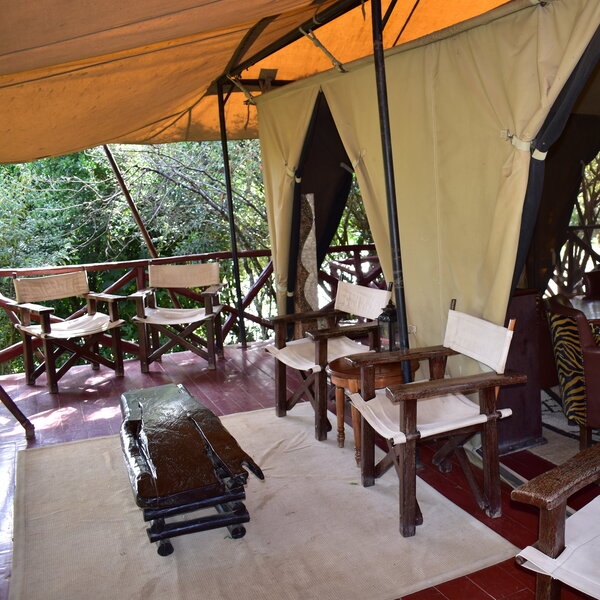
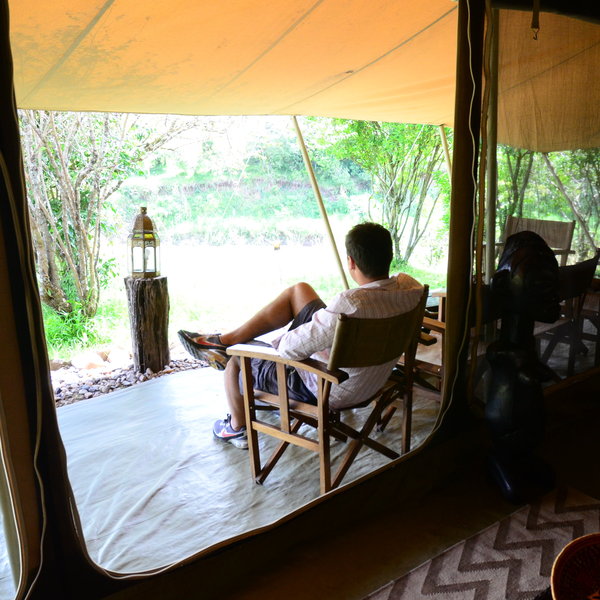
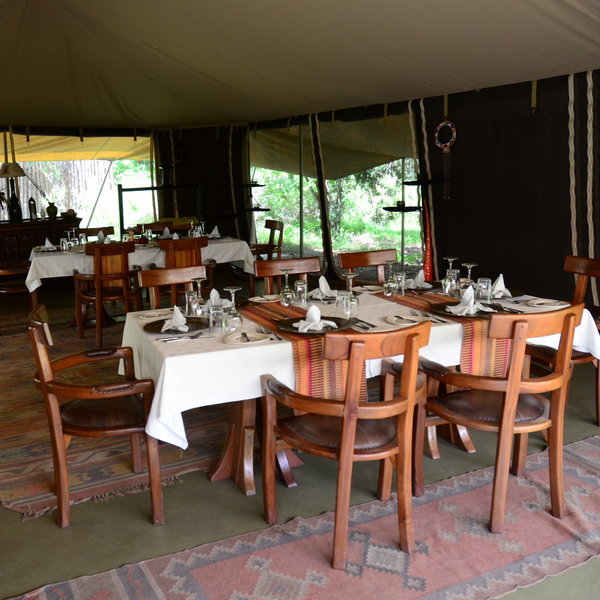
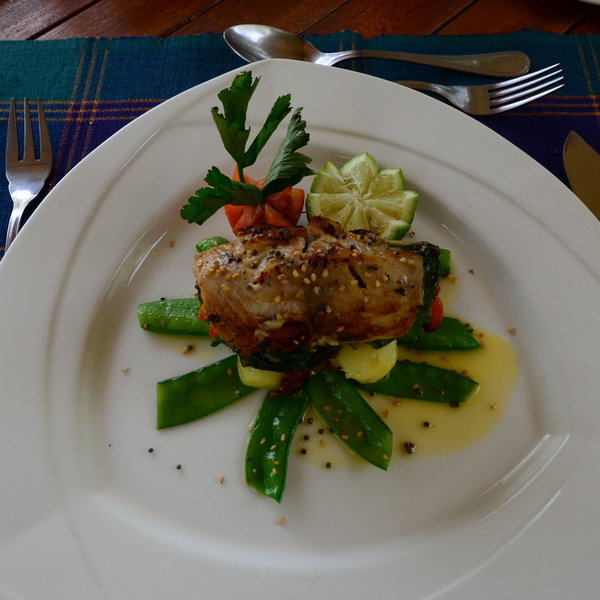
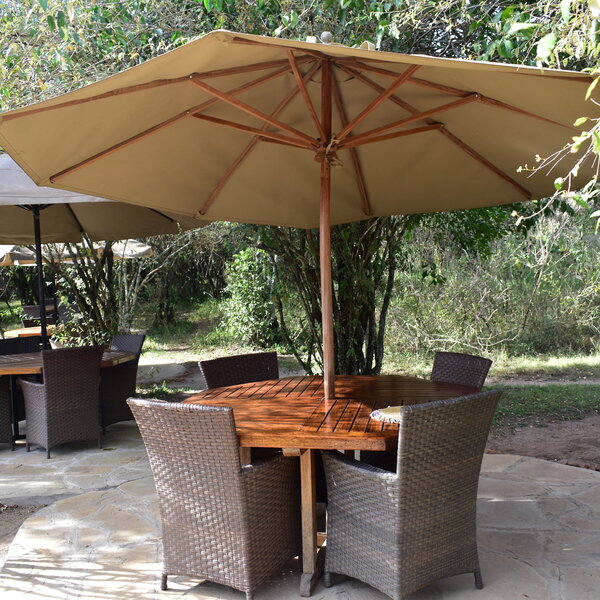
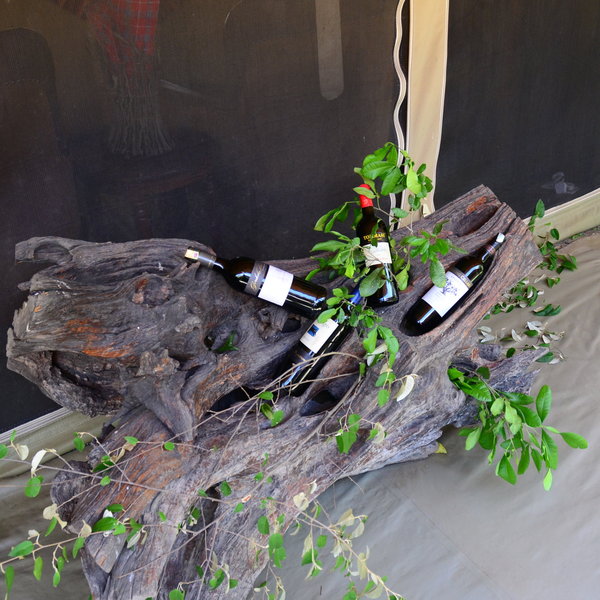
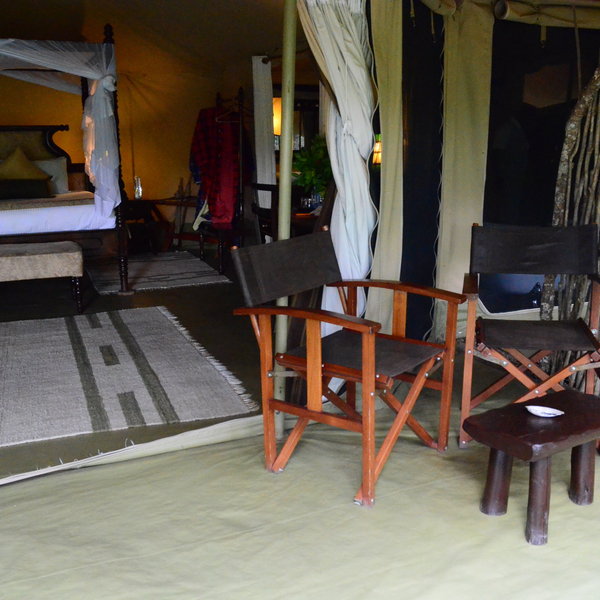
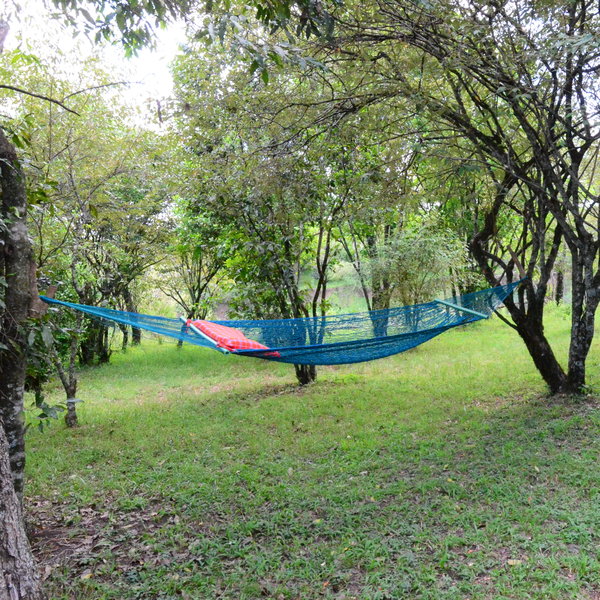
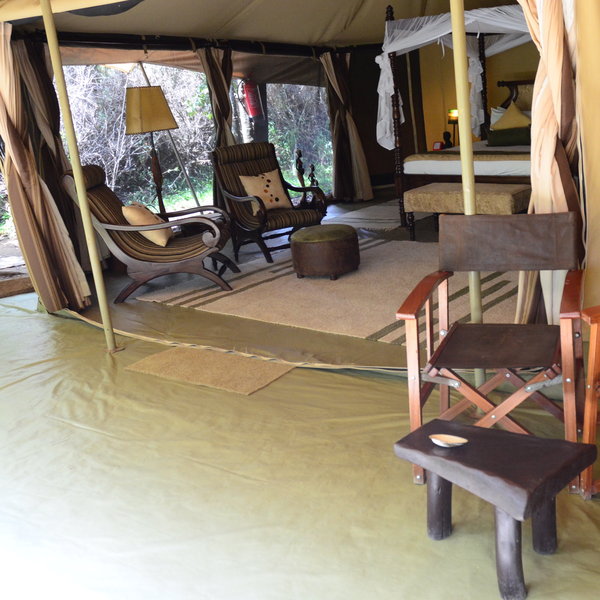
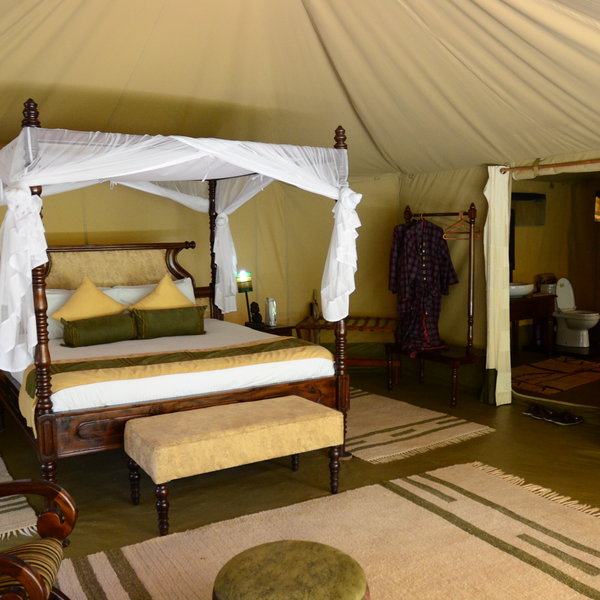
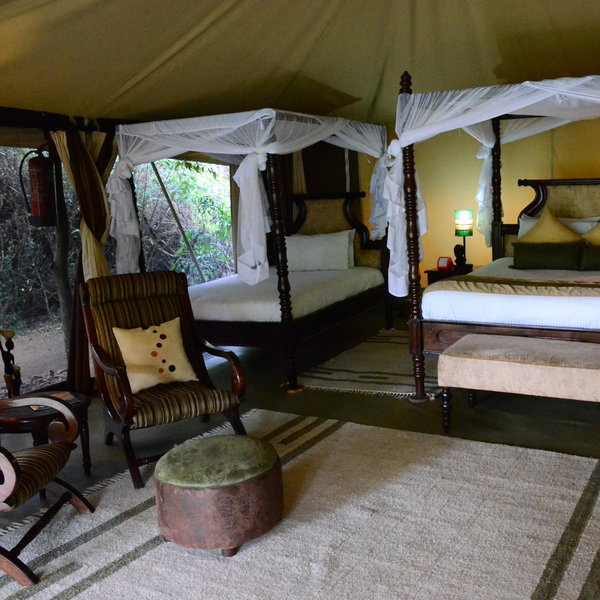
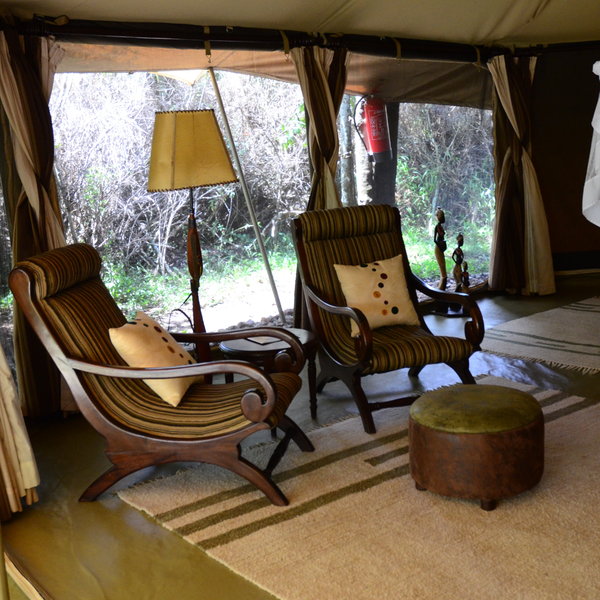
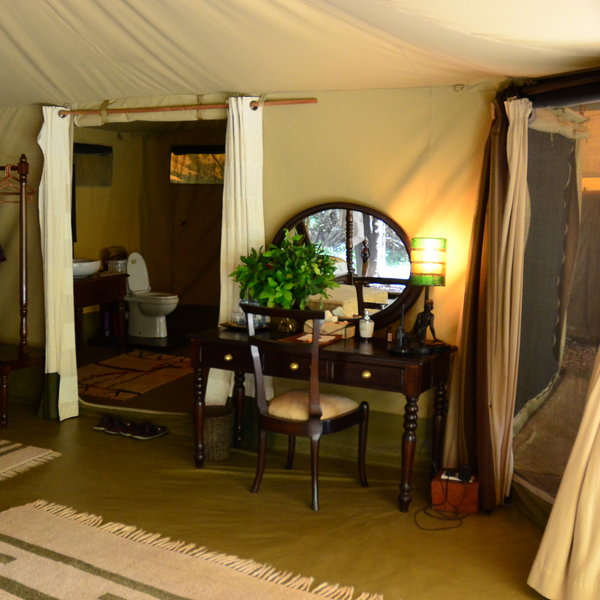
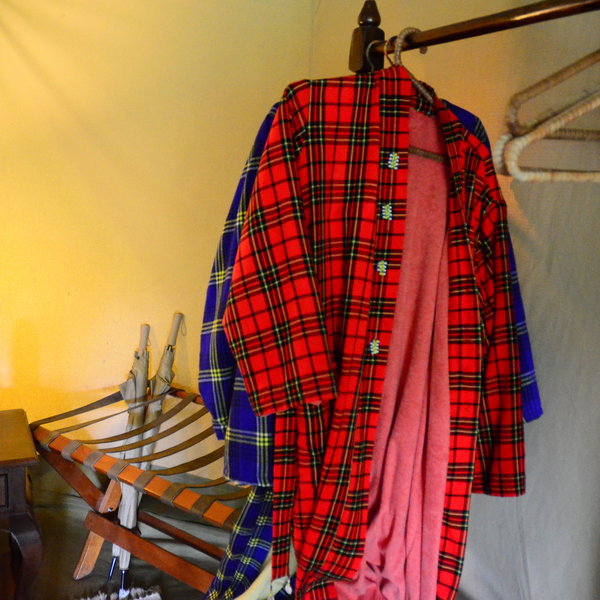
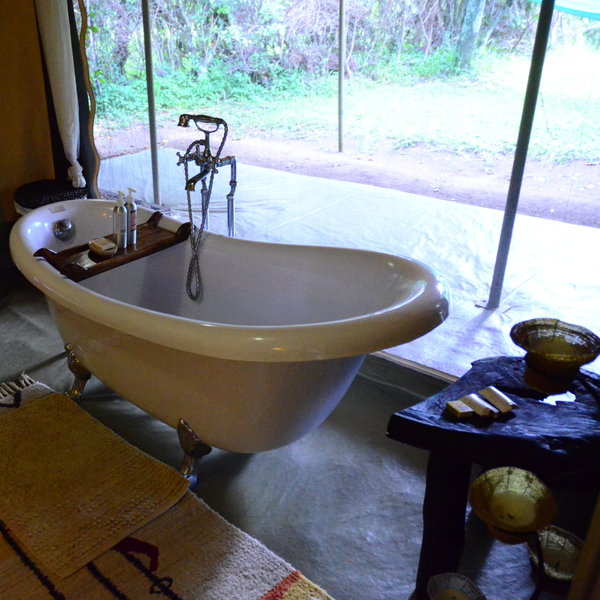
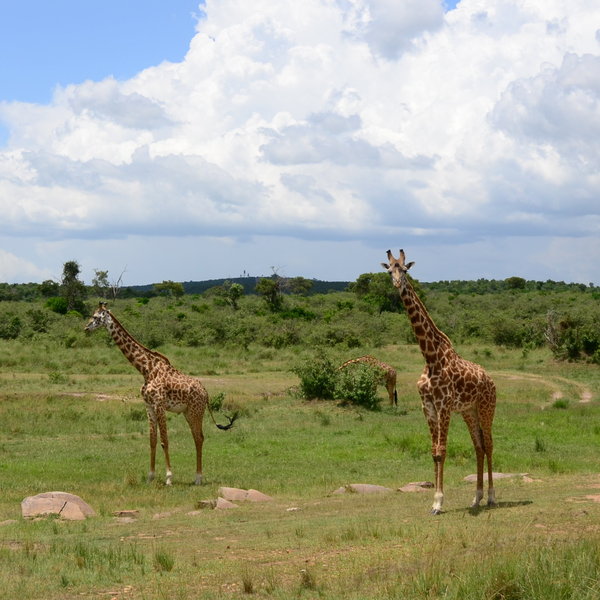
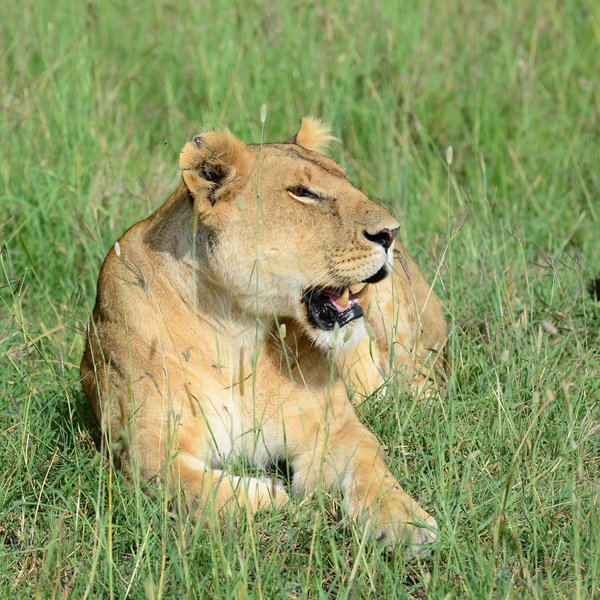
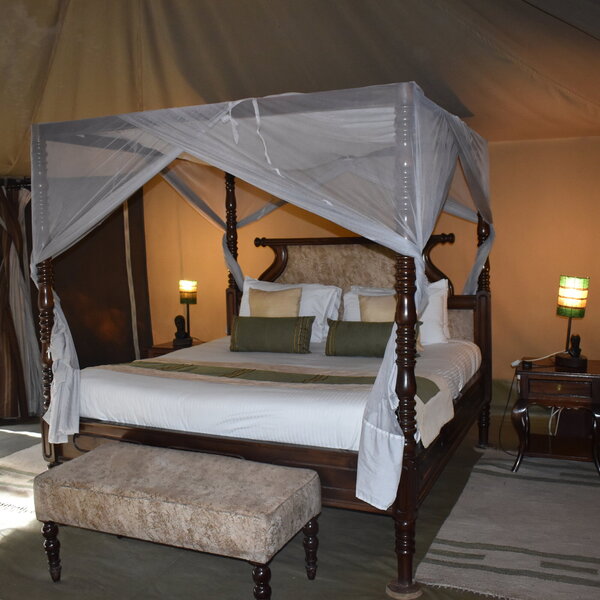

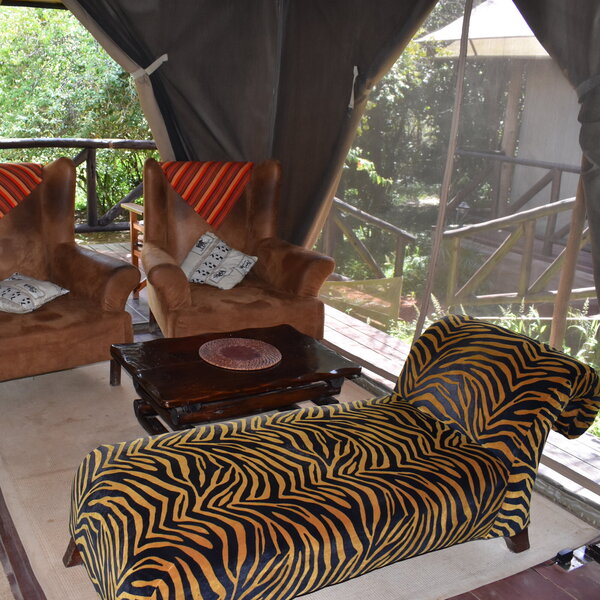
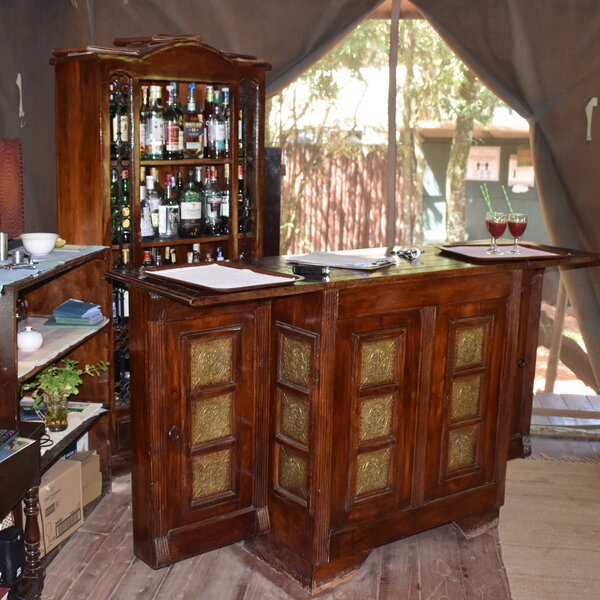
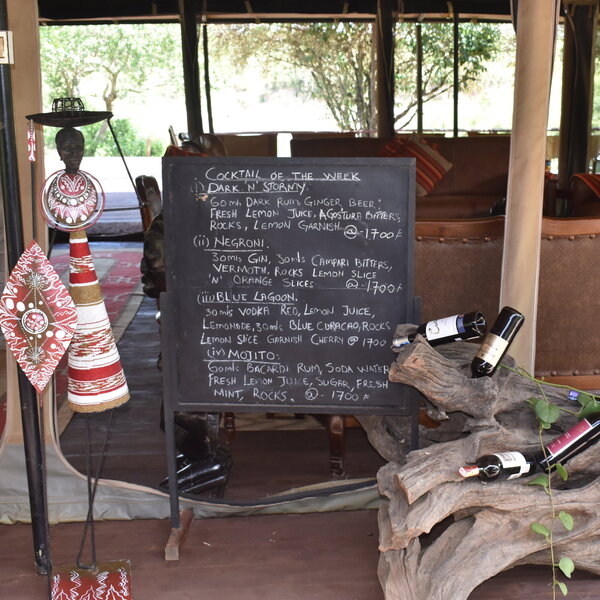
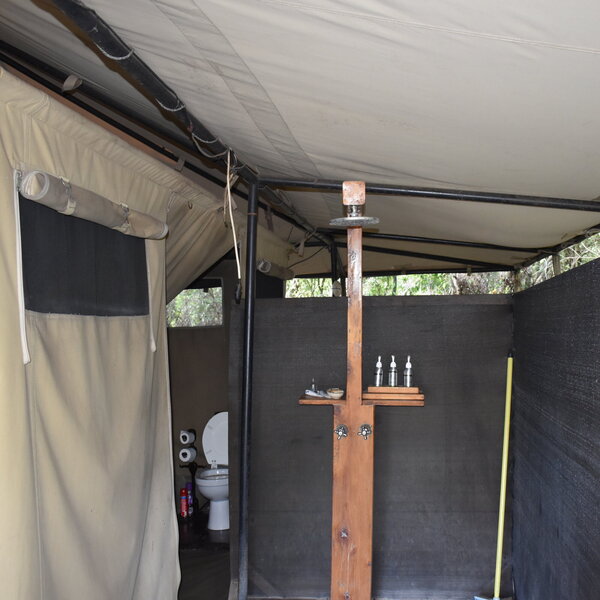
Expert Africa's gallery
When we travel we take lots of photos ourselves to give you a real and un-edited view of the safaris. See our 36 pictures and 1 videos of Ngenche Safari Camp to get the candid view.
View galleryMara Ngenche Safari Camp: Our full report
Tucked into quite thick indigenous riverine forest, Mara Ngenche Safari Camp is situated at the confluence ...
... of the Mara and Talek rivers. Historically this was an important place, where the local Maasai community would come to share loot they had raided from neighbouring tribes – hence the name Ngenche – meaning 'to share' in the Maasai language. The camp has been built to disturb as little of the surrounding bush as possible.
Under the same ownership as its sister camps Elephant Bedroom, and the much simpler Tipilikwani, Mara Ngenche Safari Camp is a very comfortable tented camp with a central location that makes it a great option for exploring the Maasai Mara National Reserve.
On arrival at Mara Ngenche, you're shown to a shady area with sofas, where you will be introduced to the workings of the camp before being taken to the main areas: three adjacent tents that house the lounge, bar, and dining areas.
The lounge tent is quite densely furnished, with comfortable brown suede and leather armchairs covered in tiger print cushions and set around a chunky carved wooden coffee table. Along the edges are additional wooden and suede lounge chairs. Thick woven carpets line the polished wood floors, creating a homely feel, while a well-stocked wooden bar equipped with soft drinks, beer, wines, and spirits decorates (and is put to good use in) one corner of the tent.
In front of the lounge is a shaded veranda with directors' chairs. It's a nice spot to look out towards the river confluence, though you have to walk a short way to get really good views and to see the hippos and crocs that – when the water is low – sit on the sandy riverbank. Next to the lounge is a small tent that houses a shop.
Not overly furnished, the dining tent is practical and simple – perfect for convivial evening meals served at individual tables by the extremely friendly and engaging staff. Wooden Swahili furniture stands at the edges of the tent, and woven carpets cover the floors.
For those who want to dine al fresco in the daytime, tables shaded by parasols stand in the garden down a very slight slope towards the river's edge. Though these don't quite have uninterrupted views due to the untouched bush that grows in front, they remain delightfully cool places to enjoy a three-course lunch.
Sandy pathways meander through the bush from the main area to Ngenche Camp's 12 spacious tented rooms, six of which face the Talek River and six, the Mara River. On the side of Talek River, two of these are double rooms and four are twin, while on the Mara River's side, two are twin and four are double. These are well spread out, having been built with as little disturbance of the natural vegetation as possible, and all can be made a triple upon request.
The tents are a good size, built with light-cream canvas that feels fresh and bright. In front, each has a hammock that hangs from the trees, a private plunge pool, and a veranda with directors' chairs and a coffee table. This is where you will find your morning tea or coffee for your wake up call – arranged the night before.
Inside, the tented rooms are very traditional – with huge wooden four-poster beds, dark wooden chairs and footstools with leather covers, a writing desk, a fan, and a safe. Little touches such as Maasai dressing gowns, slippers and umbrellas for when it rains add an extra element of luxury. Some might find the traditional décor a little dated in comparison with some of the more contemporary camps in the Mara, yet though old in style, the rooms are well kept.
Each has an adjacent en-suite bathroom with a flush toilet, twin porcelain sinks atop a wooden table in front of a large mirror, a claw-foot bath and both an inside and outside shower.
Activities at Mara Ngenche Safari Camp centre on game drives within the Maasai Mara National Reserve. Most take place outside the heat of the day, starting at 6.30am, and 4.00pm, but full-day drives are also possible. Additional activities such as sundowners with snacks, Maasai dances in the camp, and a visit to a local village (the last at extra cost, paid to the village) can also be arranged. For those wanting to indulge, a therapist can be booked who carries out treatments in their spa, and a treatment list is provided in the rooms.
Activities
4WD Safari
Birdwatching
Cultural excursion
Hot air ballooning
Private activities
Families & children
- Attitude towards children
- Mara Ngenche Safari Camp considers that it is better suited to older children as it is on a high bank of the Mara/Talek rivers and with no fence.
- Property’s age restrictions
- There is no minimum age limit.
- Special activities & services
- There are no special services offered by Mara Ngenche Safari Camp.
- Equipment
- Mara Ngenche Safari Camp has two baby cots, and triple rooms which are suitable for families.
- Generally recommended for children
- Mara Ngenche Safari Camp is located in an area of quite thick bush, right next to two rivers, and is an unfenced camp. Wildlife is likely to walk right through and so this, added to the fact that it is quite an adult camp, means it is better suited to children of 12 years and over.
- Notes
- Children need supervision at all times.
Food & drink
- Usual board basis
- Full Board & Activities
- Food quality
- During our last visit in 2023, we had time for lunch; the staff talked us through a couple of options for the starter and three choices for the main: one meat, one fish and two vegetarian.
For our lunch we chose a salad of tomato with mozzarella. For the main course we enjoyed a roasted vegetable pasta dish and for dessert we opted for a delicious passion mousse.
The chef at Ngenche explained that, with advance notice – crucial in this remote location – he is able to cater to individual tastes and various dietary requirements.
We understand that breakfast is usually taken out as a picnic of fruit, cereals, boiled eggs, baked beans, mushrooms, bacon, sausage and bread. All this goes out with vehicles and is eaten at a table set with camping chairs. Guests who opt to stay in camp may have breakfast between 6.00am until 9.00am, comprising cereals, fruits, Danish pastries and a full English (often prepared at a cooking station outside so you can interact with the chef), along with a selection of juices.
Dinner is a four-course meal with choices for the main course and dessert. - Dining style
- Individual Tables
- Dining locations
- Indoor and Outdoor Dining
- Further dining info, including room service
- Mara Ngenche Safari Camp can offer private meals, either in front of the tents or in the gardens.
- Drinks included
- Most drinks are included, apart from champagne and specially imported wines and spirits.
Getting there
- Location
- Maasai Mara National Reserve, Kenya
- Ideal length of stay
- The average stay at Mara Ngenche Safari Camp is three nights, which allows plenty of time to explore the local area.
- Directions
- Guests fly to Ol Kiombo airstrip, which is a 45-minute drive from Mara Ngenche Safari Camp, or Musiara airstrip, which is 1hr away.
- Accessible by
- Fly-and-Transfer
Communications
- Power supply notes
- The power at Mara Ngenche Safari Camp runs day and night and is almost entirely solar. They do, though, have a generator if anyone needs to use a hairdryer, though guests must ask in advance so that the generator can be started. Ngenche has UK-style three-square-pin charging points in each room.
- Communications
- There is WiFi throughout the entire camp and telephones in every room, but cellphone coverage is a bit mixed, with just one reliable spot where the signal is quite strong. If necessary there is a computer in the office that guests may use.
- TV & radio
- There is no TV at Mara Ngenche Safari Camp.
- Water supply
- Borehole
- Water supply notes
- Bottled drinking water is provided, this is transported in from Nairobi.
Health & safety
- Malarial protection recommended
- Yes
- Medical care
- Mara Ngenche Safari Camp has a first-aid box and all the guides, as well as a number of the house-keeping team, are trained in first aid. For more serious incidents there is a clinic and a doctor based near Olkiombo airstrip. Ngenche also has links to flying doctors, and there is helipad about 30 metres from the camp where a helicopter can land in the event of a medical emergency.
- Dangerous animals
- High Risk
- Security measures
- Askaris (Maasai guards) escort people around the camp at night. There are phones in each tent to call for attention in case of emergency, and someone from the armed rangers is stationed in camp at all times.
- Fire safety
- There are fire extinguishers in every tent, and a fire-break right around the camp (the rivers are natural breaks on two sides and then the road on other two). The staff are trained in case of fires.
Useful info
- Disabled access
- On Request
- Laundry facilities
- Laundry is at extra cost, this varies between $2 - $6 per item. It is hand washed, line dried and ironed. The staff do not wash delicates or underwear, but there is washing powder in the rooms for guests to do their own.
- Money
- Mara Ngenche Safari Camp cannot offer currency exchange. For valuables, every tent has a safe.
- Accepted payment on location
- Additional payments may be made in cash in Kenyan shillings, US dollars, British pounds and euros. Ngenche also accepts Visa and MasterCard credit cards at no extra charge, but not Amex.
Plan and book your trip with Expert Africa
All of our trips are tailor-made, so we'll always adapt them to suit you. Talk to an Expert and let us plan and arrange your perfect trip.

Talk to an Expert
Call or email us now! We’ll match you with the Specialist in our team who is best suited to help you. Then together we can start planning your trip.

Set up your itinerary
Based on our experience and your ideas, your specialist will create a detailed, costed itinerary. We’ll refine it together, until we have a trip that you’re perfectly happy with.

Prepare for your trip
The same Specialist will make the seamless arrangements for your trip, send you detailed travel documents, and be available to answer any questions before you depart.

Travel with peace of mind
After you set off, you’ll be cared for by our partners in Africa, most of whom have worked with Expert Africa for decades. And if you ever need us urgently, we’re available 24/7.

When you return
We love to learn about your trip, and so will always be grateful if you’ve the time to give feedback to your Specialist when you return.
Mara Ngenche Safari Camp's location
Look closer at the environment and surroundings of Ngenche Safari Camp.
Excursions from Ngenche Safari Camp
Optional extra day-trips and excursions possible whilst you're staying at Ngenche Safari Camp. Talk to us: these are usually best arranged before you go.
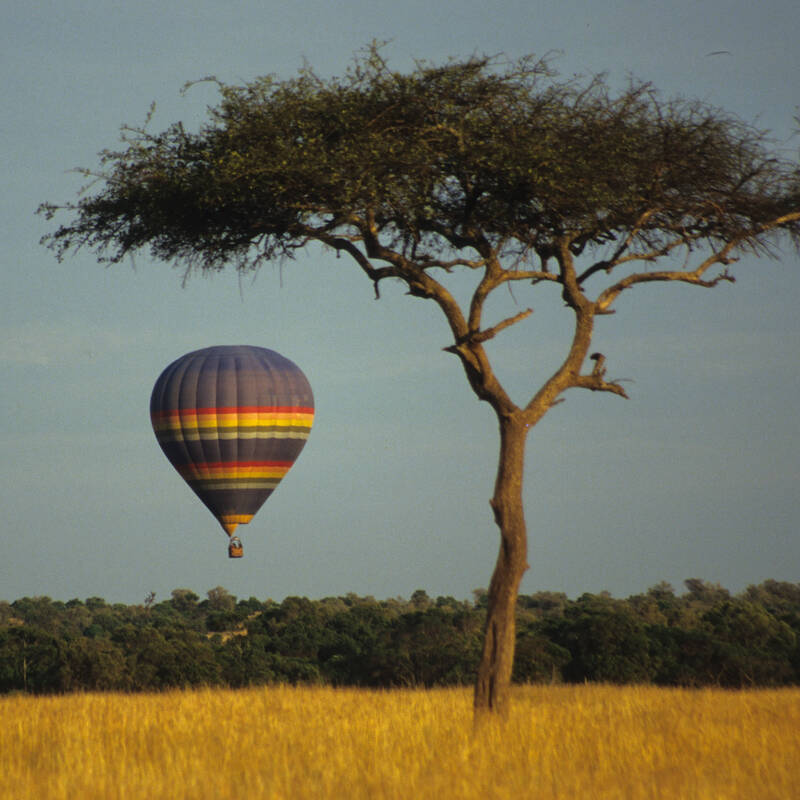
Balloon flight over the Mara
3 hours in total - morning only
With the sun rising over the Loita Hills, you scramble into the balloon basket for the start of a once-in-a-lifetime experience. You’re about to go drifting with the breeze above the trees and plains of one of the world’s greatest wildlife regions.
More about Balloon SafariOther lodges in Maasai Mara National Reserve
Alternative places to stay in this same area.
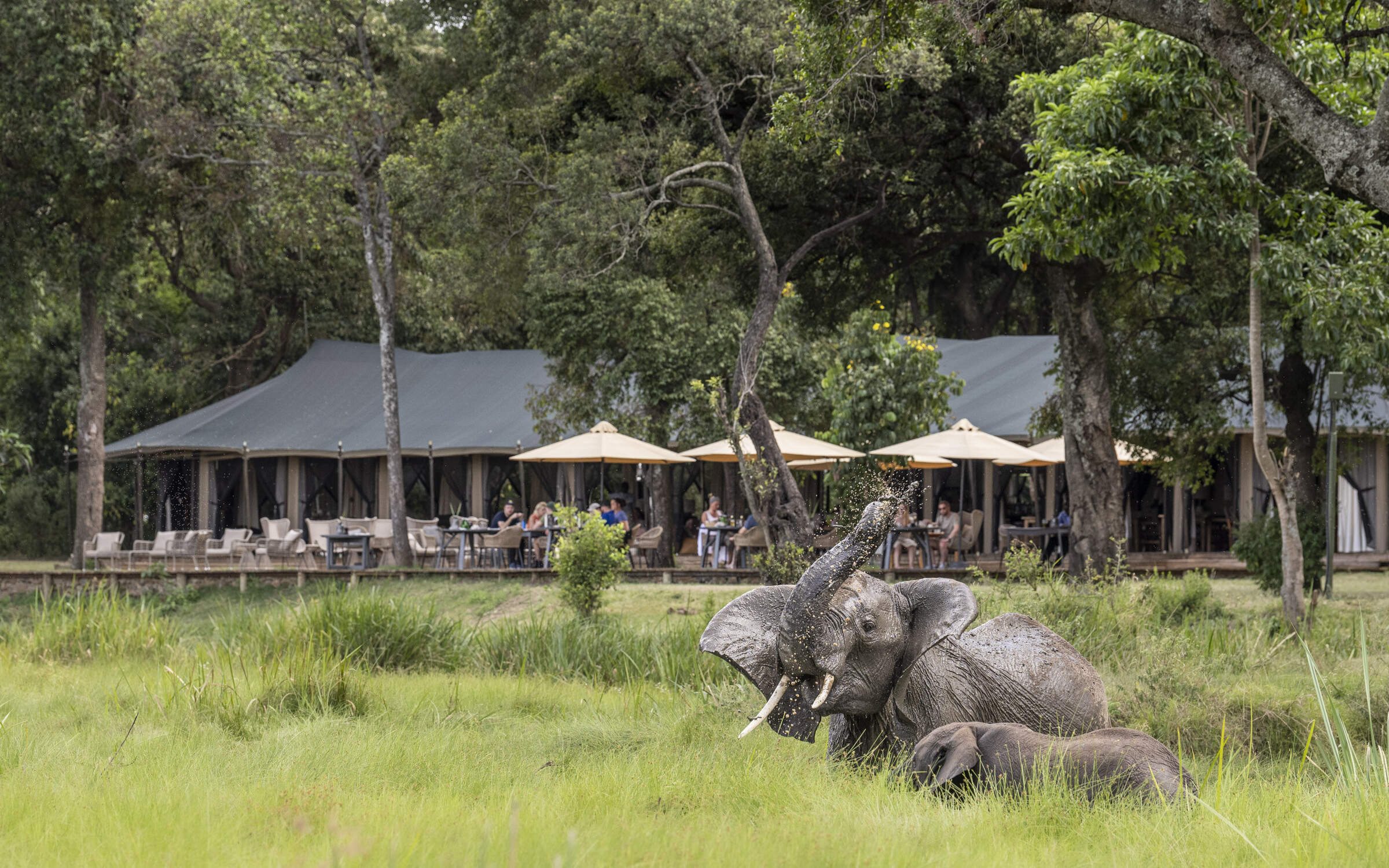
Little Governors'
Little Governors’ Camp sits by a swamp (an old oxbow of the Mara River) in the Mara Triangle sector of the Maasai Mara National Reserve. It has its own balloon-launching site.
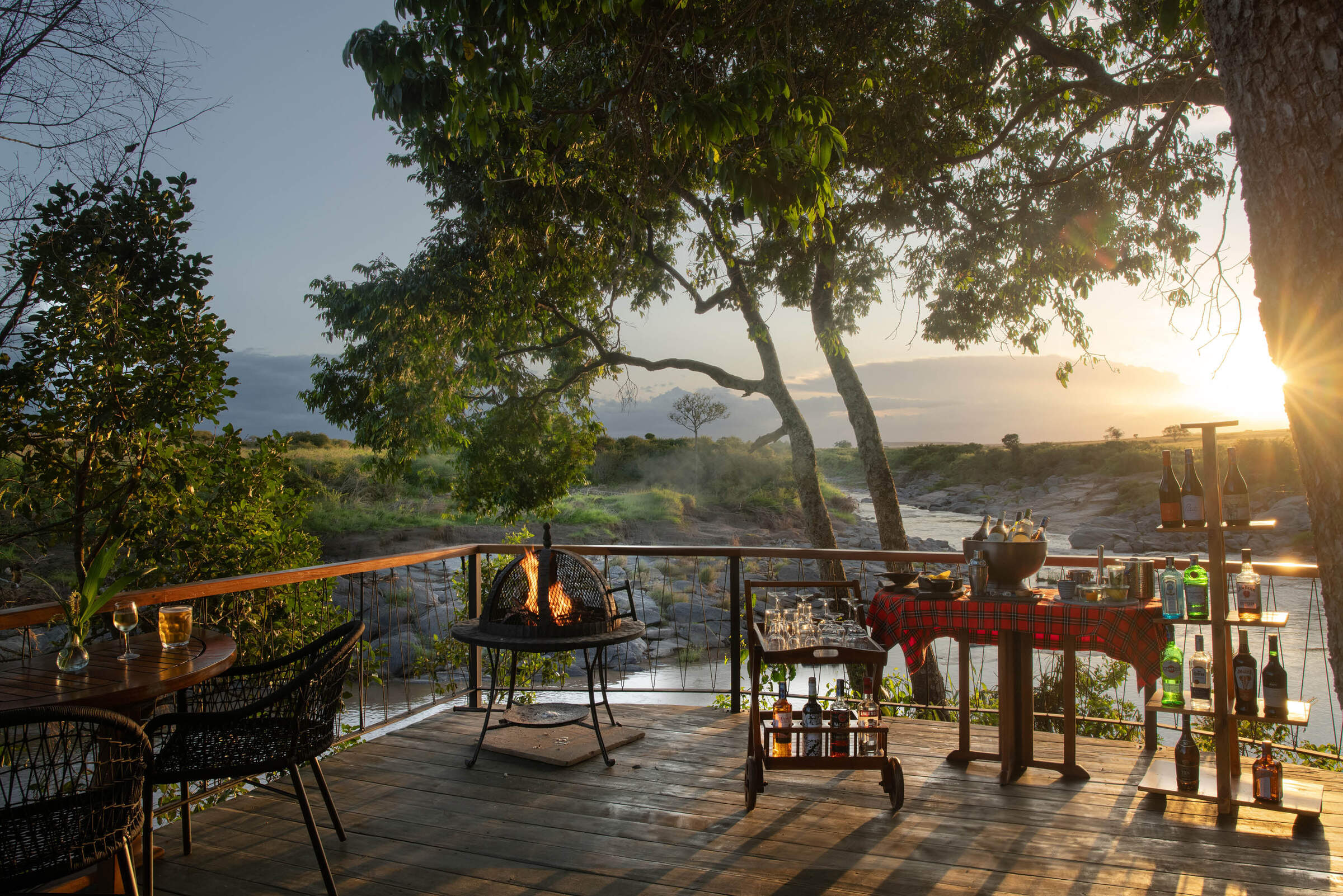
Rekero
Rekero is an unpretentious, high-end safari camp, for travellers who take their wildlife watching seriously and are prepared to pay for an exceptional location.
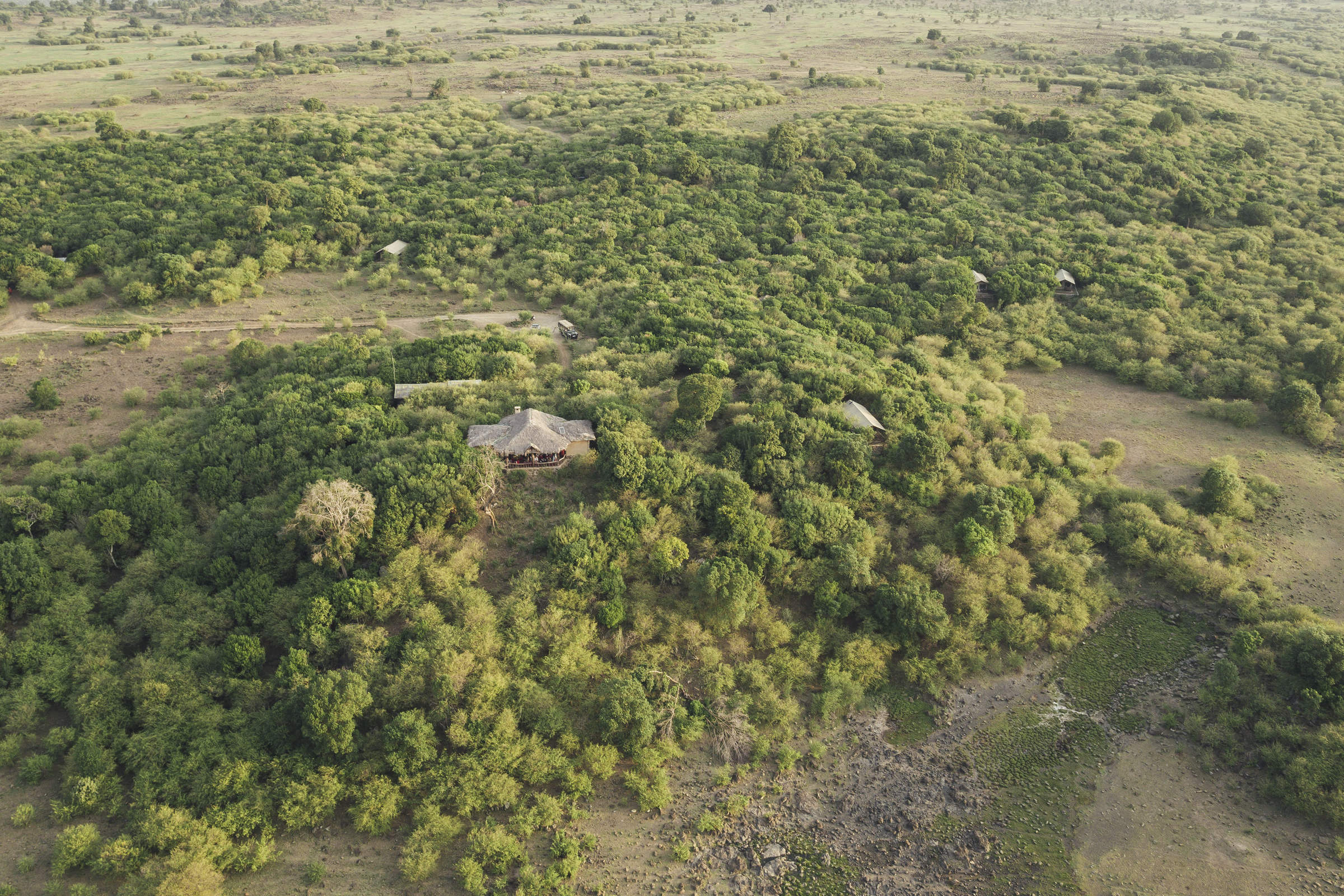
Tangulia Mara
Tangulia Mara is a rustic and traditional safari camp on the border of the Maasai Mara National Reserve owned by Jackson Looseyia of Big Cat Diary fame.
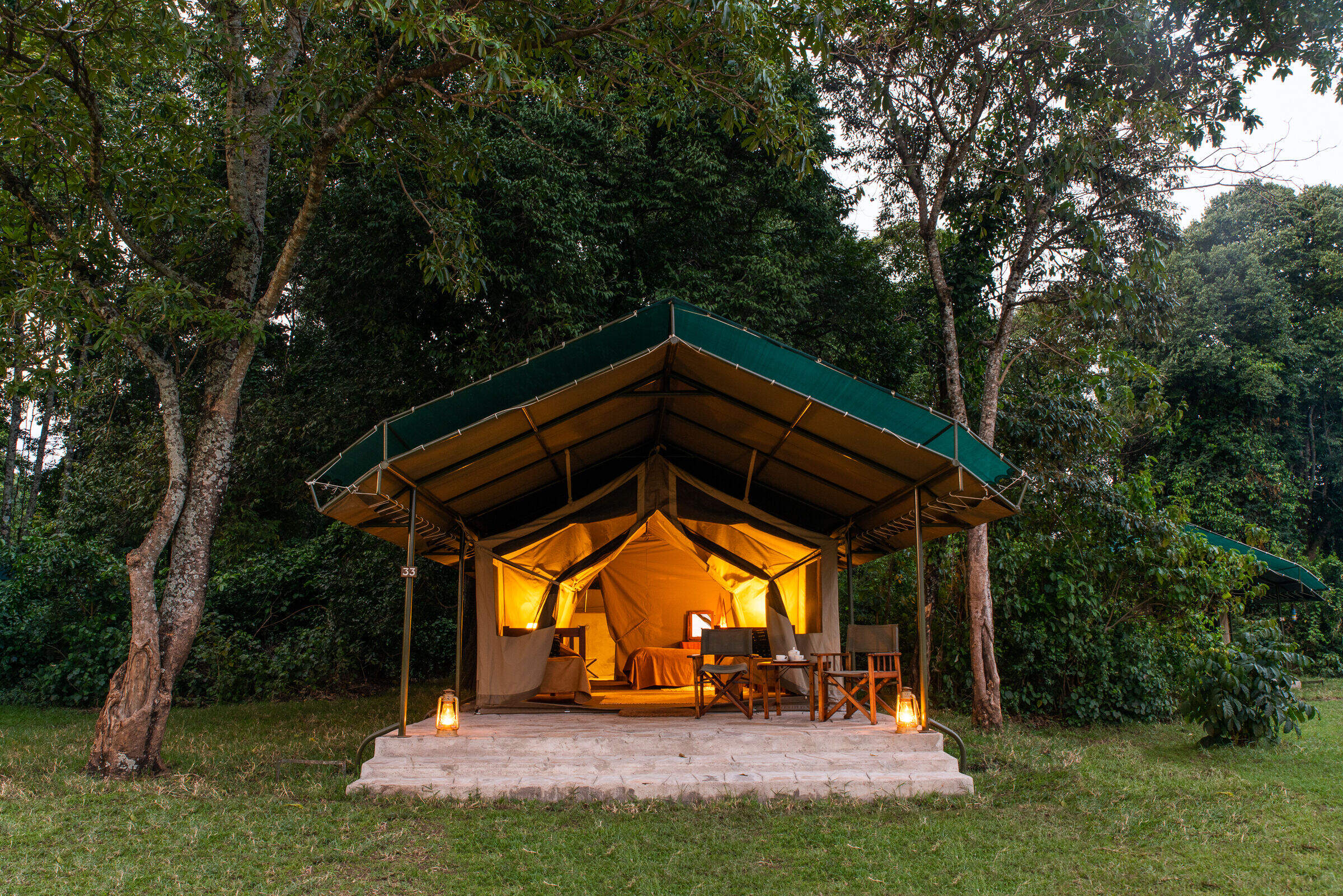
Governors' Camp
Governors' Camp is a large tented camp on the Mara River and one of the oldest in the Mara region, dating from 1972. Although unfenced, and regularly visited by elephants, the whole compound is always busy with human activity.
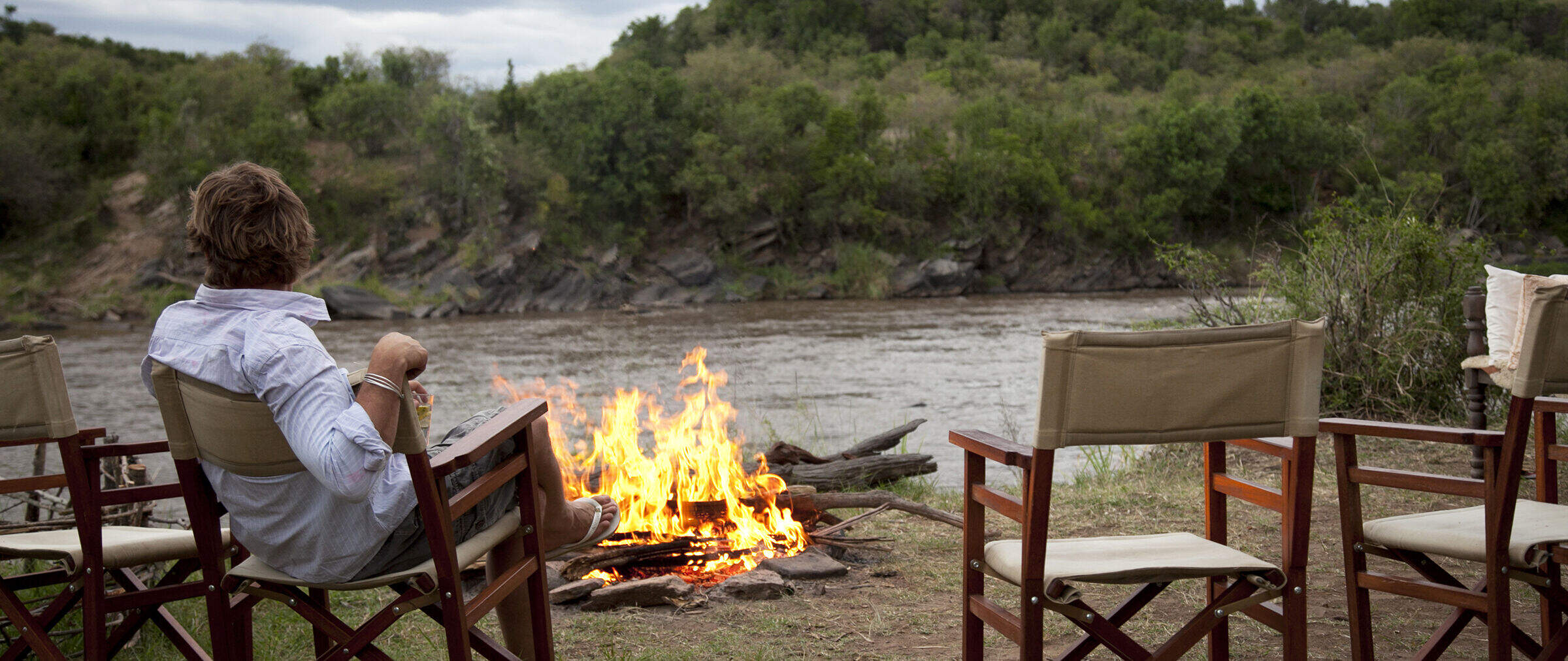
Serian Nkorombo
Serian Nkorombo is a luxury bush camp in the Musiara sector of the Maasai Mara National Reserve on the east side of the Mara River.
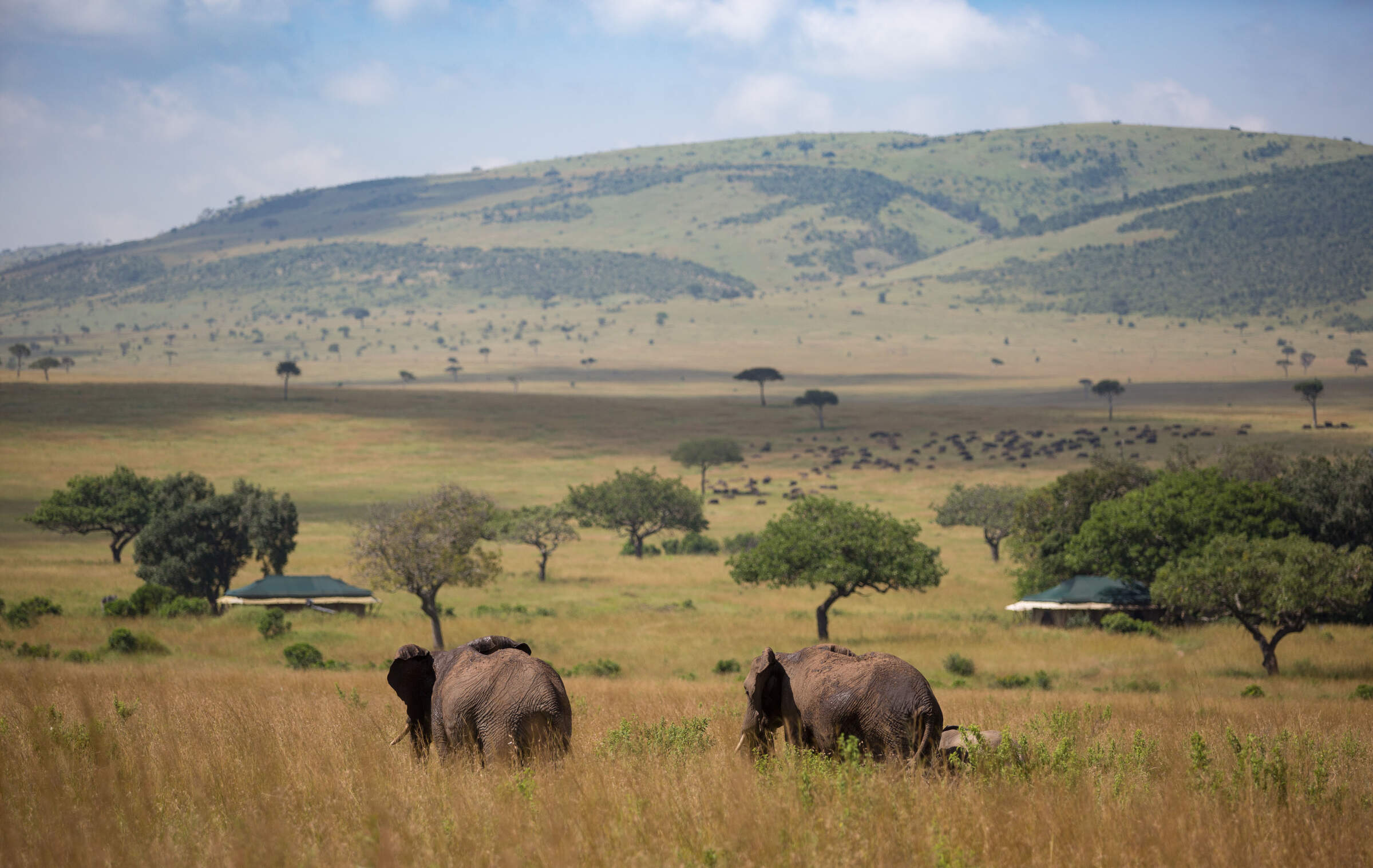
Sand River Camp
Luxury colonial-style tented camp on the banks of the Sand River close to the Tanzania border – a great spot to see the wildebeest migration.
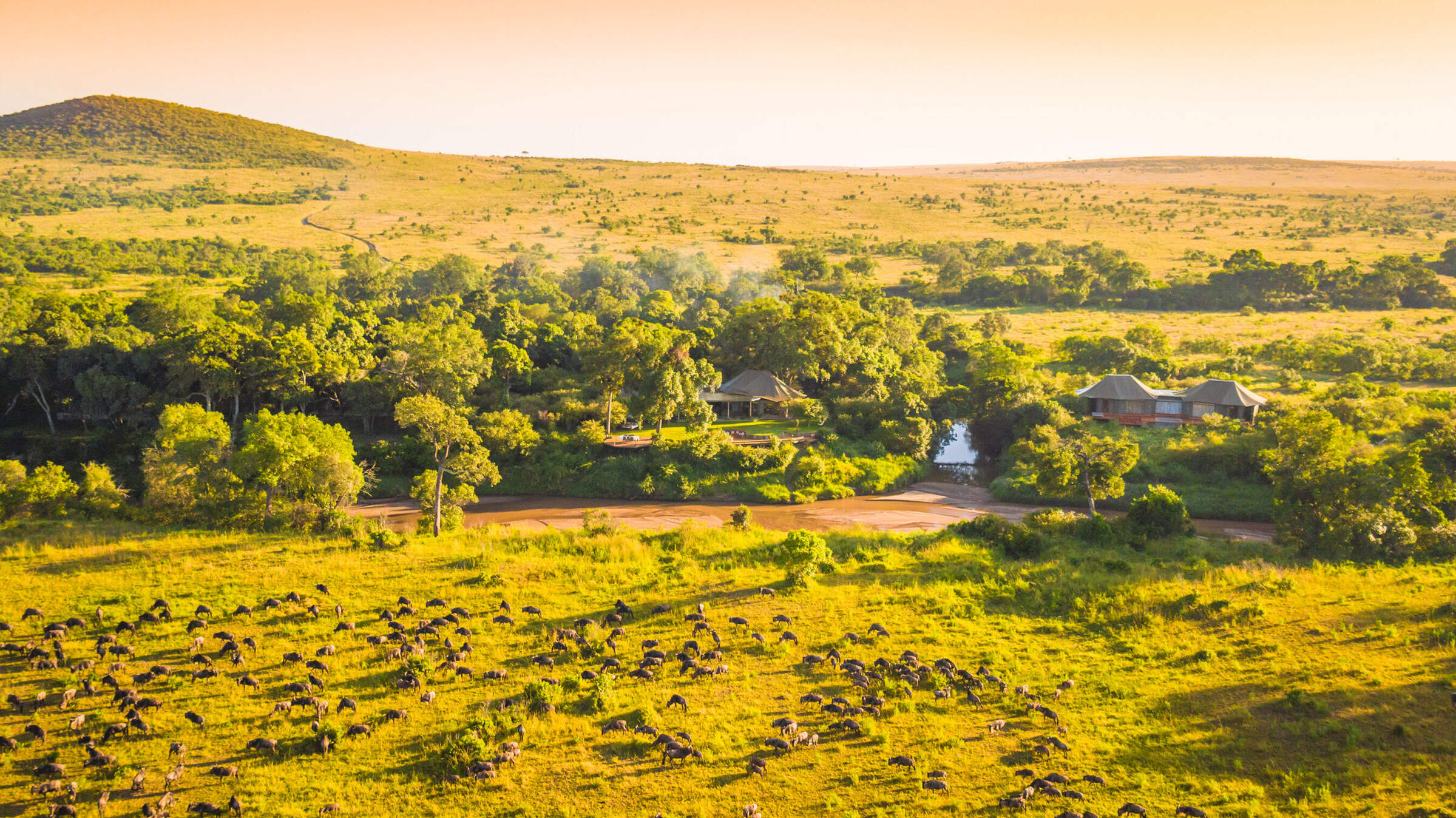
Sala's Camp
Sala’s Camp is a comfortable and intimate tented camp, with seven tented rooms, located on the banks of the Sand River, in the far south of the Maasai Mara National Reserve.
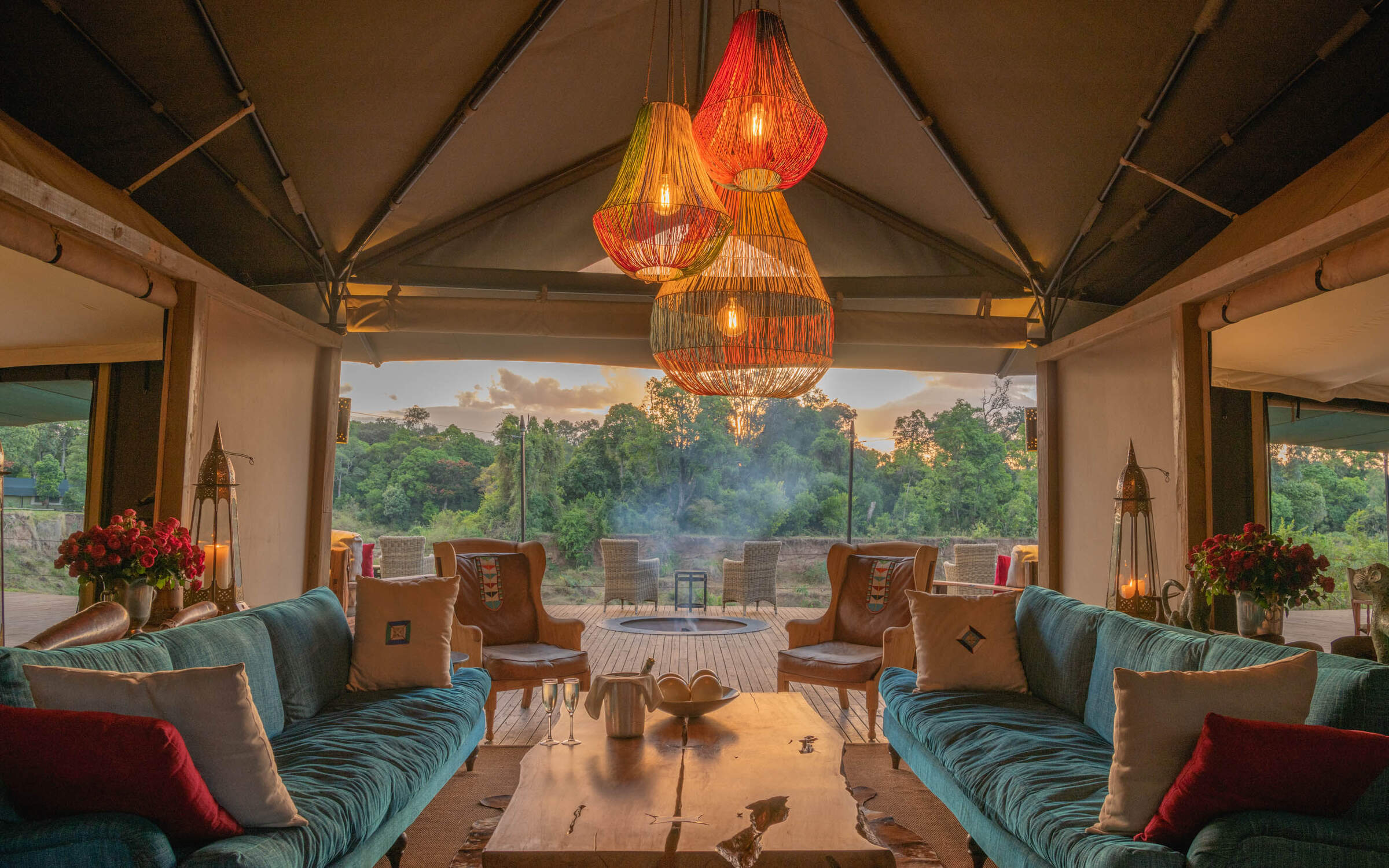
Governors' Il Moran
The smallest and most expensive of the three camps in the Governors’ group, Governors’ Il Moran Camp hugs a meander of the Mara River just 1km north of the main Governors’ Camp.
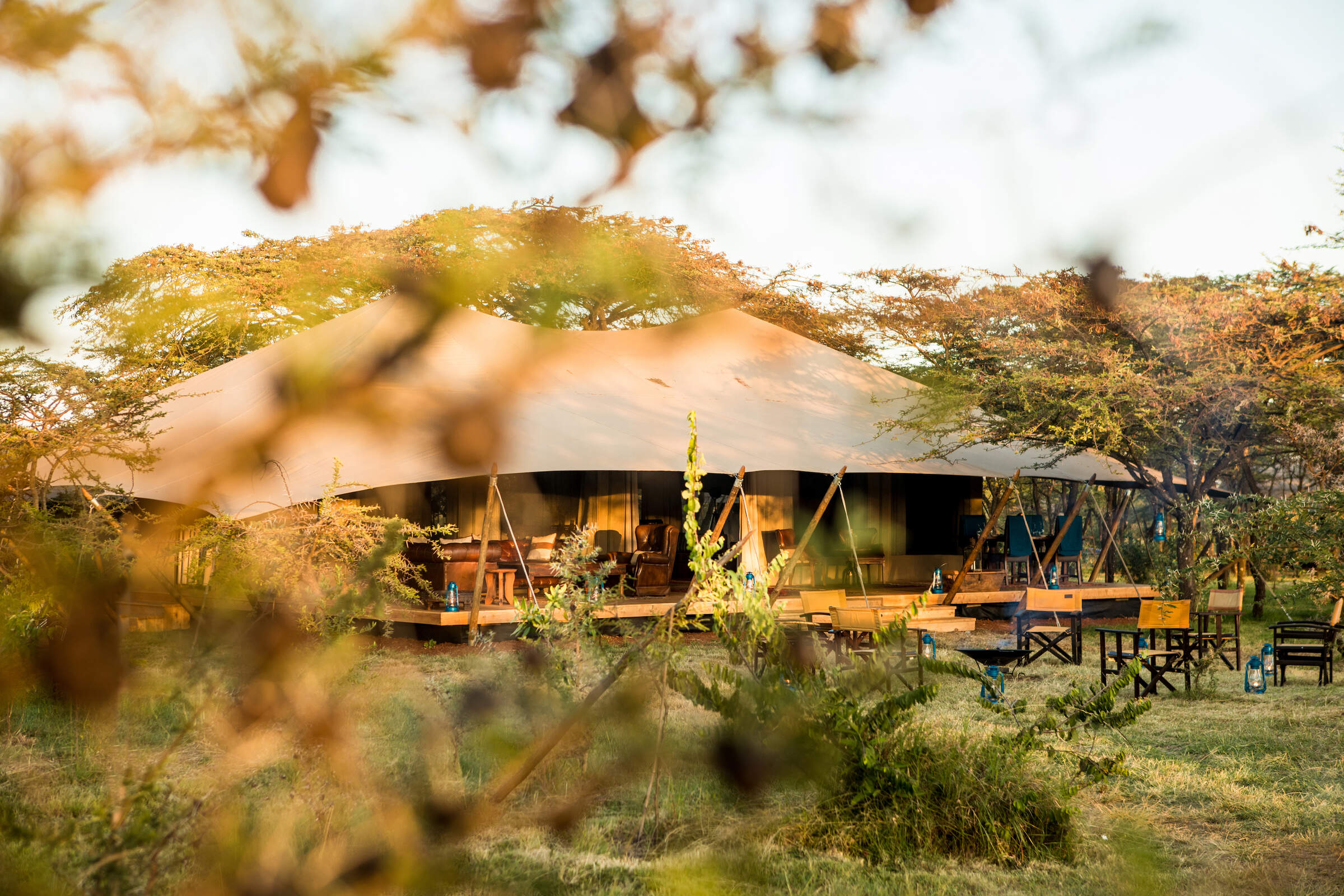
Mara Expedition Camp
Mara Expedition Camp is a small luxury camp located in a slightly elevated area of bush and woodland, just outside the Maasai Mara National Reserve.
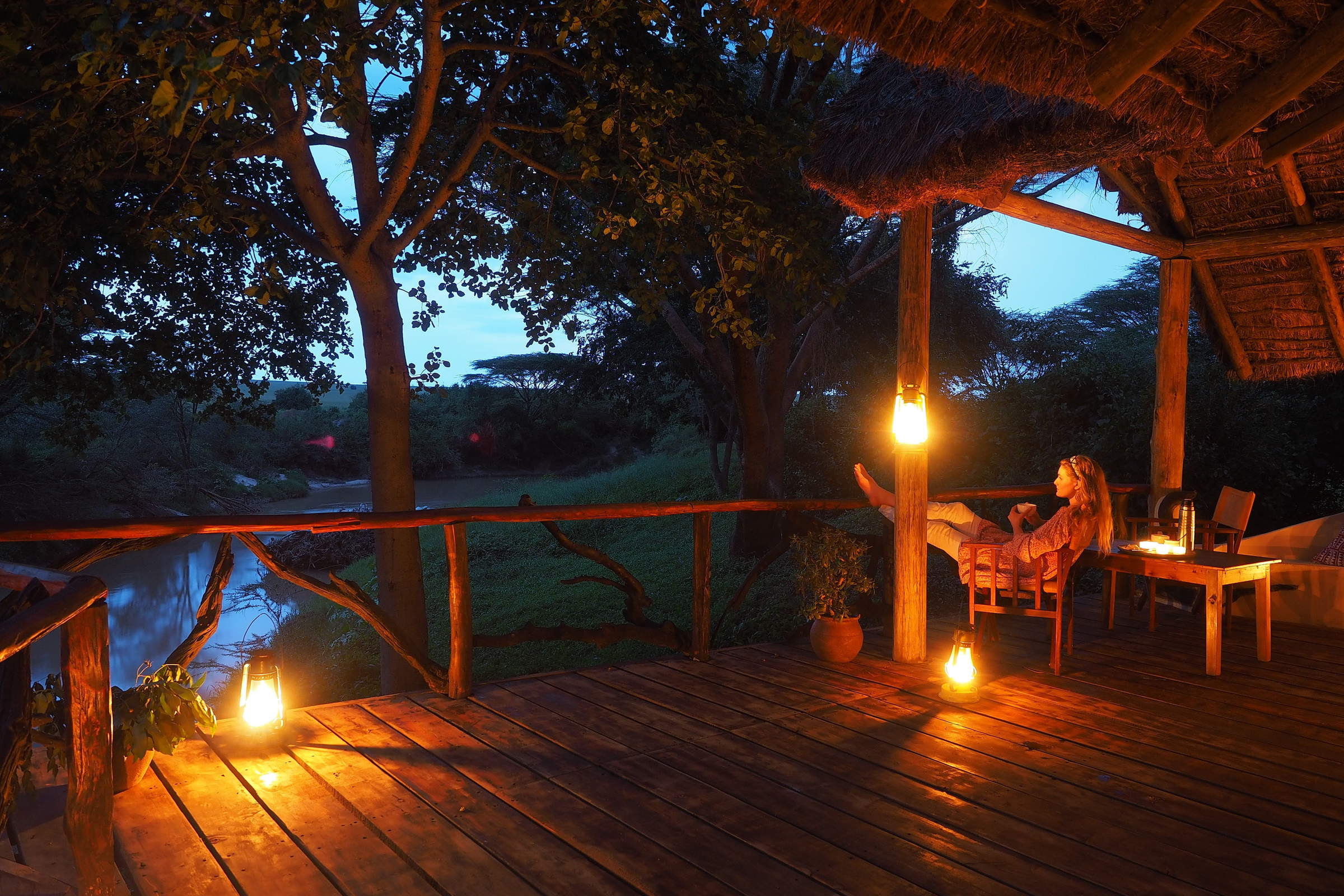
Basecamp Maasai Mara
Basecamp Maasai Mara is a family-friendly, award-winning eco-camp on a U-bend on the north bank of the Talek River, on the boundary of the Maasai Mara National Reserve.
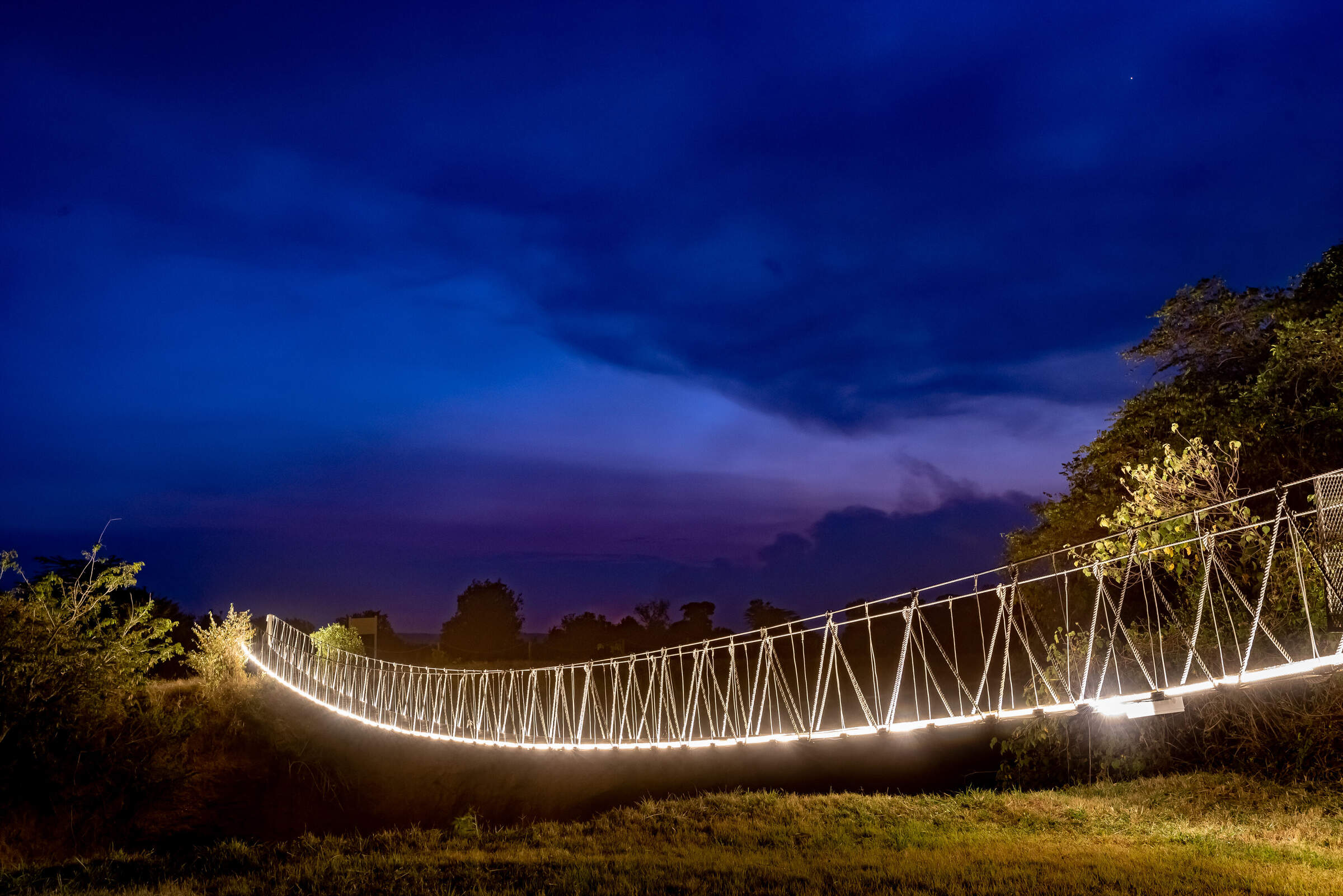
Ilkeliani Camp
Ilkeliani Camp is a smart elegant camp overlooking the Talek River, on the edge of the Maasai Mara National Reserve.
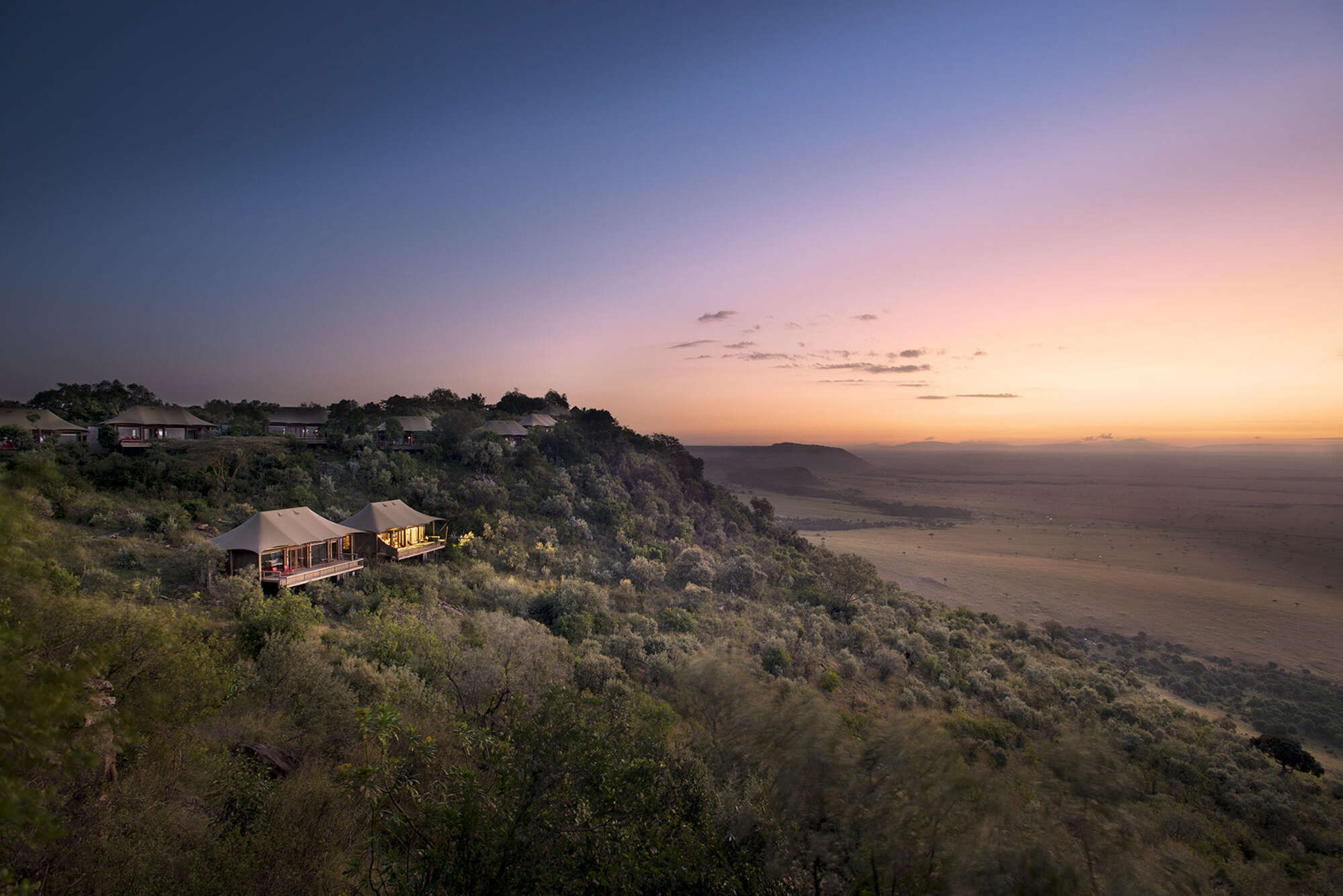
Angama Mara
Angama Mara is a top-end luxury tented camp on the Siria-Oloololo escarpment of the Maasai Mara ecoystem, just above the Mara Triangle sector of the Maasai Mara National Reserve.
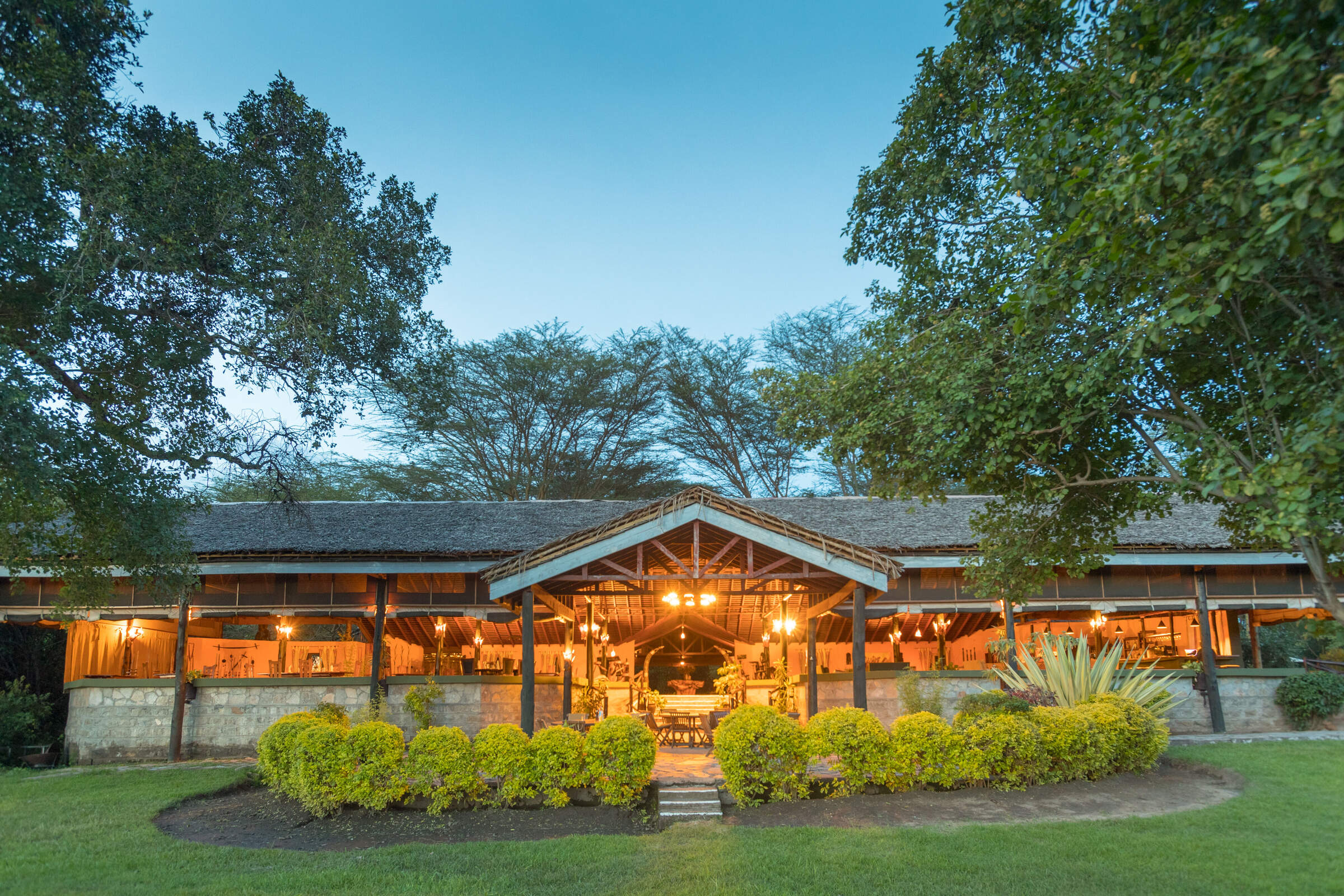
Tipilikwani Camp
Tipilikwani Mara Camp is a larger, mid-range tented camp offering good value from its base on the Talek River just outside the Mara National Reserve.
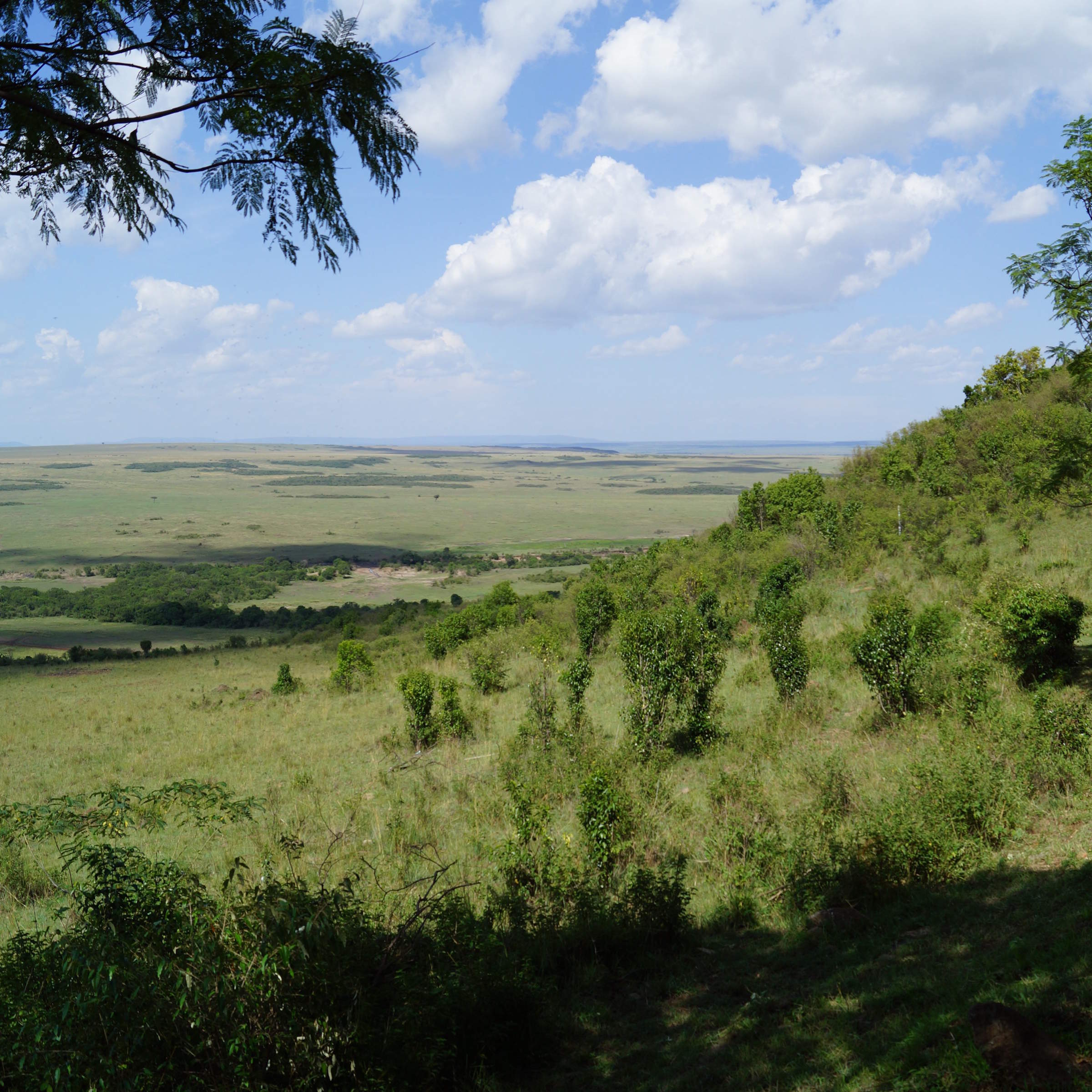
Mara Serena Safari Lodge
Mara Serena Safari Lodge is a large safari hotel with views of the Mara River, in the Mara Triangle sector of the Maasai Mara National Reserve.
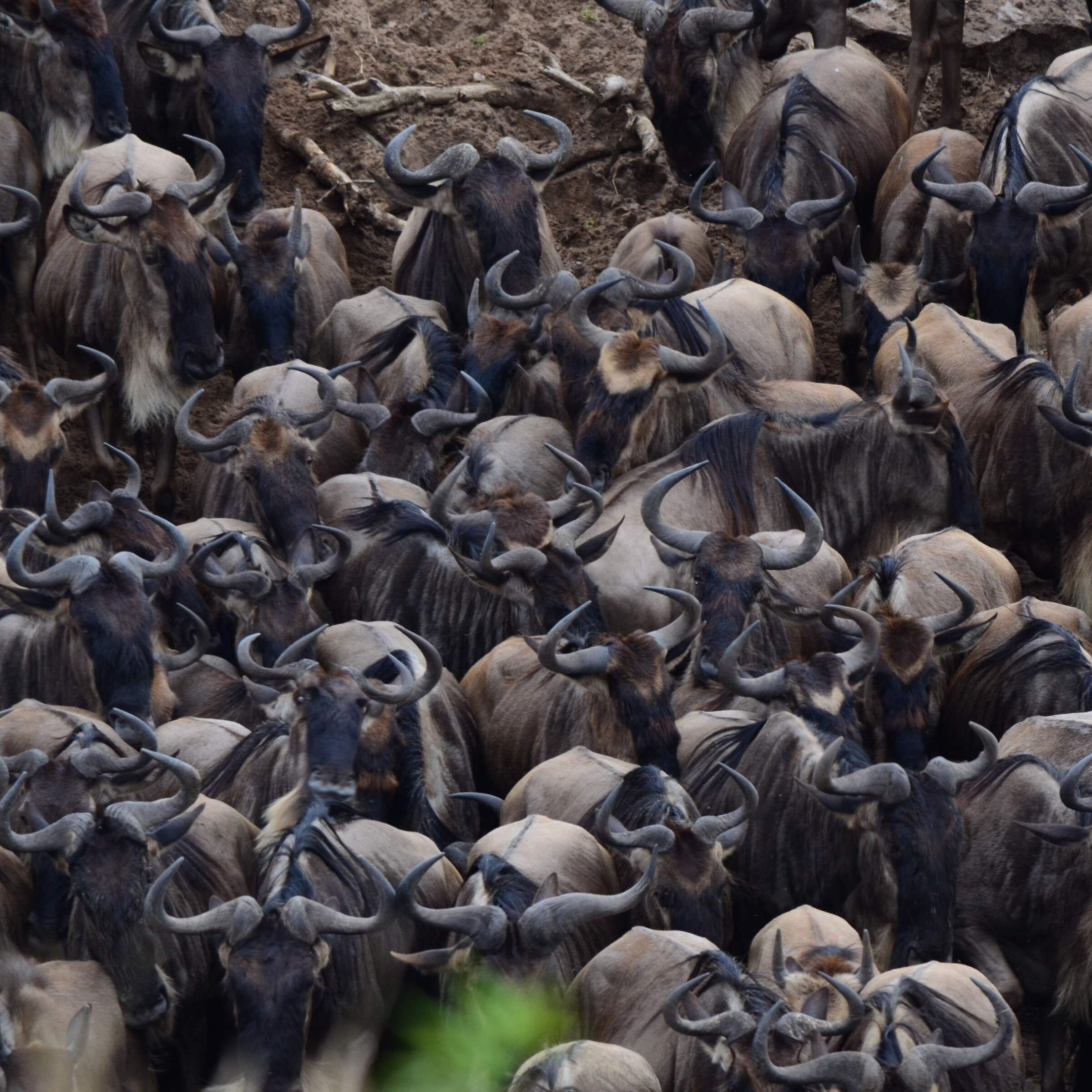
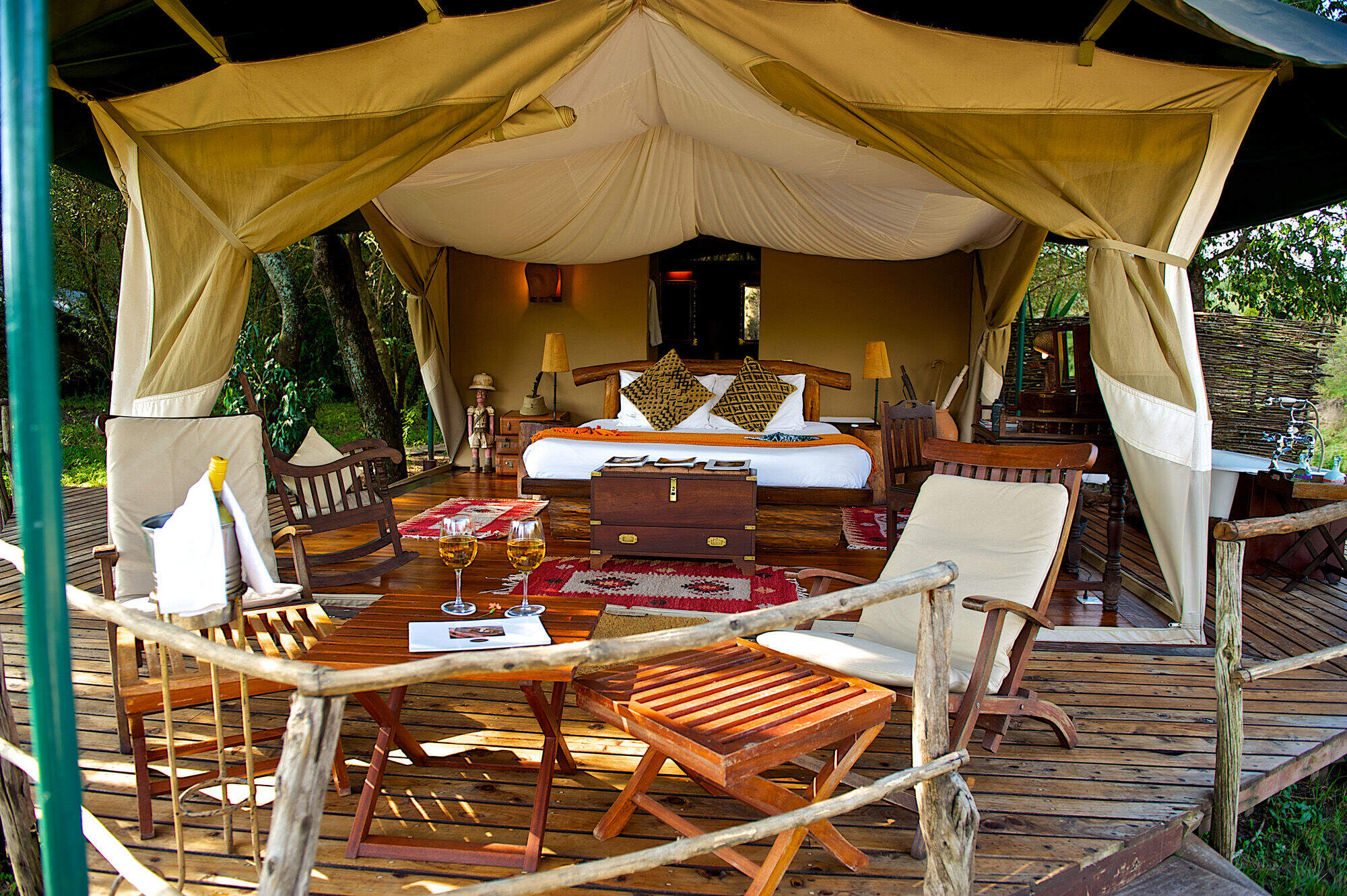
Mara Explorer Camp
Mara Explorer is a smart tented camp is in a scenic location on a bend in the Talek River.
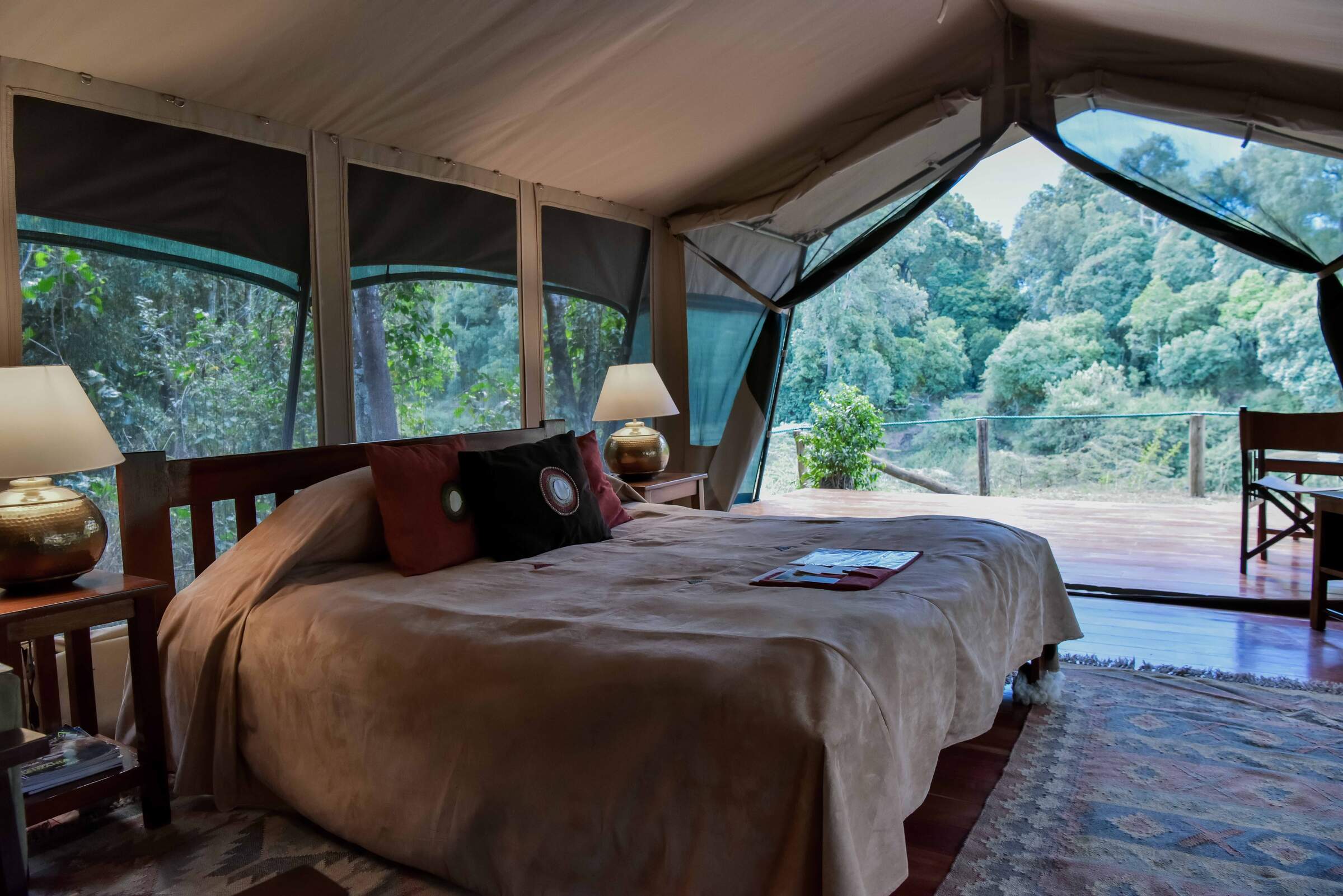
Governors' Private Camp
Located on a secluded bend of the Mara River, Governor’s Private Camp has just eight tents and is booked on an exclusive basis.
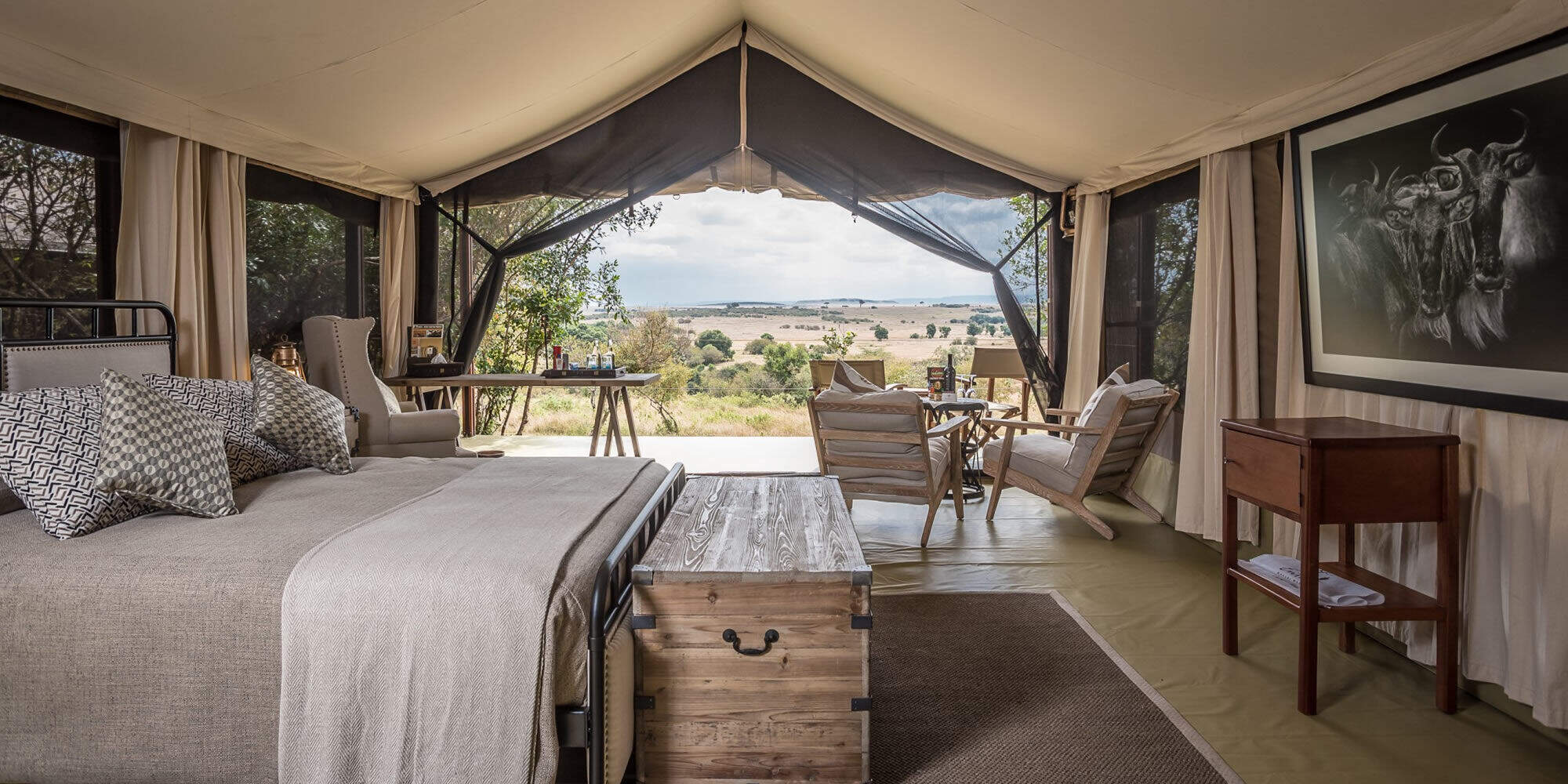
Entim Camp
Entim Camp is well located in the heart of the Mara National Reserve, offering traditionally styled tented accommodation.

Naibor Camp
Naibor has a great location in the Mara reserve, and offers accommodation to suit different budgets, with stylish high-end tents and some simpler ones too.
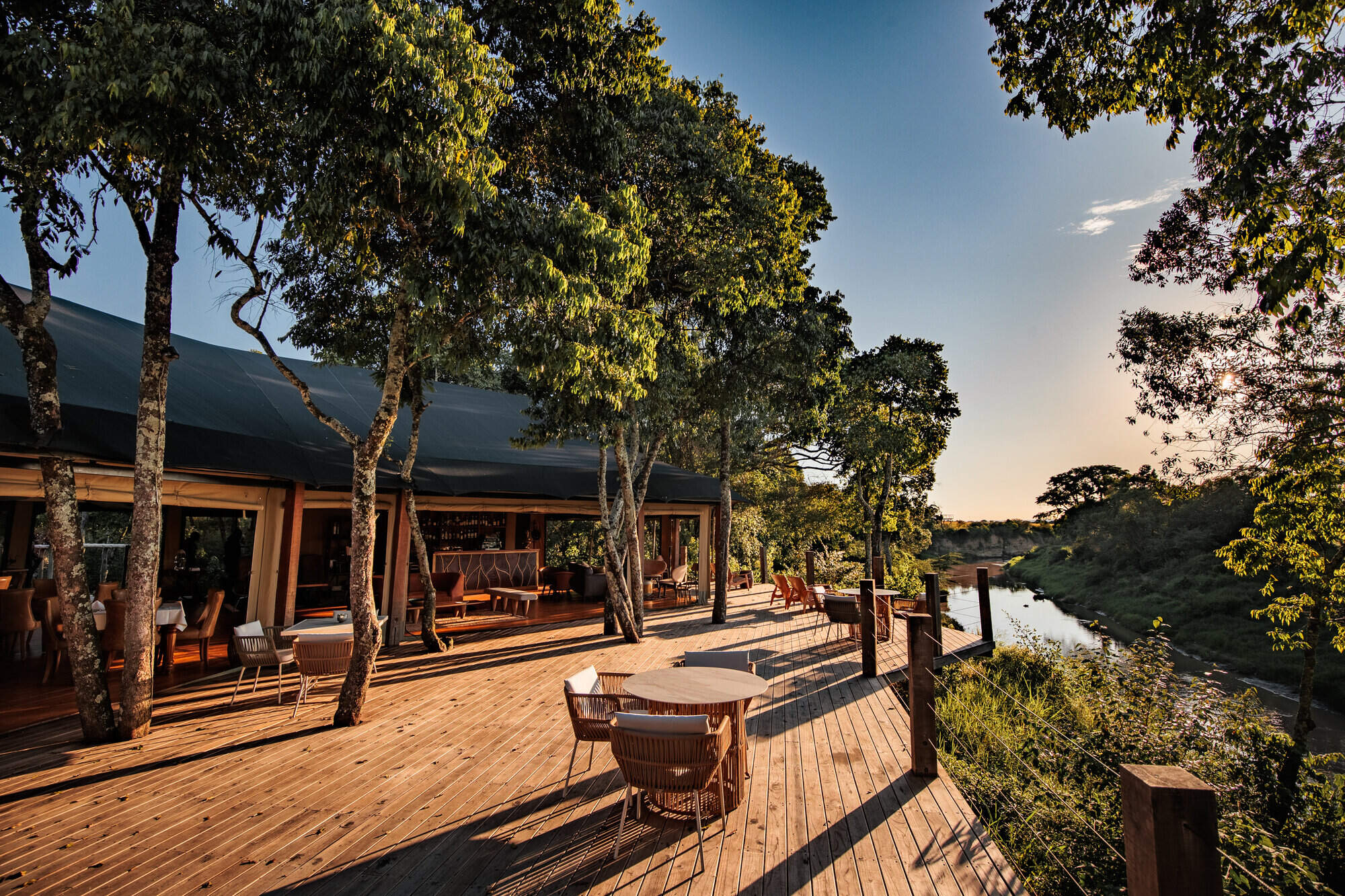
Ishara
Ishara is a highly luxurious safari camp in the Maasai Mara, located on the Talek River, which is one of the best areas in Kenya for wildlife.
When to go to Maasai Mara National Reserve
Our month by month guide: What it's like to visit Ngenche Safari Camp in Maasai Mara National Reserve
Jan
Feb
Mar
Apr
May
Jun
Jul
Aug
Sep
Oct
Nov
Dec
Kenya in January
Clear, hot days and warm nights make this high season a popular time for safaris and it’s also good for diving and snorkelling as water clarity is excellent and gets better as the dry season progresses. Most lodges and tented camps treat January after the New Year week is over, as mid-season, making it a good compromise in terms of value for money with reasonably reliable, dry weather and some greenery left in the landscape.
Expert Africa bases its description of climate and weather in January, like the other months of the year, on the climate records of roughly the last 100 years, and it's fair to say that the weather and seasons since the beginning of this century have been highly irregular and unpredictable.
- On average, January is the second driest month of the year
- Elephants dig waterholes in the dry riverbed in the Samburu reserve.
- Wildebeest and many antelope have their calving season, to February.
- Migrant birds are seen in huge numbers, especially in the Rift Valley.
- Sea water clarity around the coral reefs generally good.
Our view
Fantastic: the very best time to visit
Weather in January
Kenya in February
With the short dry season well established, the grass grazed down and wildlife gathering close to water points, this is still a good time for a safari. Good water clarity in the Indian Ocean's coastal waters makes for excellent diving and snorkelling conditions.
Expert Africa bases its description of climate and weather in February, like the other months of the year, on the climate records of roughly the last 100 years, and it's fair to say that the weather and seasons since the beginning of this century have been highly irregular and unpredictable.
- On average, February is the driest month of the year.
- It’s sometimes possible to swim with whale sharks at Diani Beach.
- Migrant birds are still seen everywhere, especially near water.
- This is usually peak calving season for wildebeest and many antelopes.
- This month is often the hottest of the year, especially on the coast.
Our view
A very good time to visit
Weather in February
Kenya in March
Hot, increasingly humid weather – with good diving and snorkelling conditions at the start of the month – gives way to rains and lower accommodation costs. Expert Africa bases its description of climate and weather in March, like the other months of the year, on the climate records of roughly the last 100 years, and predicting the seasons since the beginning of this century has been difficult.
March is the month when – traditionally – intensely hot conditions build up until a cloudburst finally happens at the end of the month or in early April, to relieve the humidity. As ever, regional variations across the country can greatly impact on visitors' experiences.
- Sea-water clarity is best for diving before the long rains start.
- Visitor numbers are low, though the Easter holidays can be busier.
- Night skies can be scintillatingly clear in early March.
- Cropped down savannah grasses can make it easier to see the wildlife.
- Temperartures climb high, especially at lower elevations.
Our view
A good time to visit, with pros & cons
Weather in March
Kenya in April
April sees the full onset of the southeast monsoon wind or kusi, which heralds the long rains. Temperatures drop soon after the rains are established and you’ll often have facilities largely to yourself in this more affordable low season, sometimes known as the "green season". The bush quickly springs to life, with greenery sprouting almost before your eyes. While you're likely to get a fair number of heavy showers, the breaks in the rain can yield sparklingly clear conditions.
With the dust settled and bright sun piercing the clouds, conditions can be sublime for photography, especially first thing in the morning or in the late afternoon with another storm brewing. You may be lucky, or you may find conditions very wet and muddy.
- A wet month, the coast often gets more than 300mm (12in) of rain.
- Sunny spells can provide great light for photography.
- Buffalo and zebra calving season often happens in this month.
- Baby crocodiles hatch, for example on Central Island in Lake Turkana.
- Palearctic migrant birds gather to fly north to breeding grounds.
Our view
A time to avoid if possible
Weather in April
Kenya in May
While game viewing can be trickier as vegetation runs riot, between the cloudbursts the colours and light are great for photography at this time of year. Expert Africa bases its description of climate and weather in May, like the other months of the year, on the climate records of roughly the last 100 years, and while it's reasonable to expect heavy rains in many parts during this month, especially on the coast, the rains don't always come evenly or in some areas come at all.
In an El Niño year, the so-called long rains that normally are established across much of the country by May can be meagre, to the despair of farmers. On the other hand in a La Niña year, the long rains can bring floods. On the coast, the monsoon winds make the climate much more predictable, with heavy rains common throughout this month.
- Frogs breed in the ponds in the Arabuko Sokoke Forest near Watamu.
- Wildebeest, impala and other grazers are in rut (the breeding season).
- Kilimanjaro looks its best as heavy rain falls as snow on the summit.
- There's a sharp peek of rainfall on the coast with many rainy days.
- Accommodation prices are uniformly low, while some camps close.
Our view
A time to avoid if possible
Weather in May
Kenya in June
The rains give way to cloudy, cooler weather, often making for comfortable conditions by the end of the month, especially in the highlands. Starting from mid-June or the beginning of July and running until the end of October, this is the high season, and accordingly has higher accommodation rates and – at least until early September – higher numbers of visitors.
While the early part of June can often be rainy on the coast, it can be a great time to go on safari, with fresh greenery, many young animals and good photographic conditions with clear air.
- The Taru Desert, inland from the coast, is carpeted with flowers.
- The Lake Turkana Cultural Festival is held in Loiyangalani.
- Madaraka Day (commemorating self rule) is 1 June.
- The annual Lewa marathon runs a course through the wildlife.
- The Diani Rules "sports" event rips up the rulebook at Diani Beach.
Our view
A good time to visit, with pros & cons
Weather in June
Kenya in July
Kenya’s “winter" season sets in (winter is a misnomer but locals feel the change), and the highlands can be rather grey. Skies are often cloudy and the days can be surprisingly cool, with an average daytime high in many highland safari areas of 15-20°C and night-time temperatures dropping below 10°C in Nairobi and the highlands. Lower parts of the country and the coast are usually warm and dry, typically reaching highs of around 25°C with lows in the high teens.
As this is the start of the high season, coinciding with the usual arrival of the wildebeest migration in the Maasai Mara, July is a busy month. Ask your Expert Africa specialist to advise on how to avoid the crowds, which is not that difficult to do.
- The wildebeest migration usually reaches the Maasai Mara in July.
- Simbi Lake (Kisumu) and Crater Lake (Naivasha) can attract flamingoes.
- Watersports start to pick up and some surfing is possible at Malindi.
- Afternoon thunderstorms are a common feature in the Maasai Mara.
- The sea can be choppy along the coast, making diving difficult.
Our view
A good time to visit, with pros & cons
Weather in July
Kenya in August
The Great Migration fills the plains of the Maasai Mara, and school’s out, so the park roads are full of tourists – ask your Expert Africa specialist for advice on crowd avoidance tactics. Choose a private conservancy rather than a public national park or national reserve for quieter conditions.
Like July, August is generally mild and relatively dry in the safari areas, but it can be very chilly in the highlands, even in the middle of the day, and hail occasionally falls above altitudes of around 2,400m (8,000ft). Nairobi can be disappointingly overcast, with low cloud.
- Apart from Christmas holidays, this is the busiest month of the year.
- Late August sees peak wildebeest drama at the Mara River crossings.
- Coastal winds are good for kite- and wind-surfing.
- Few mosquitoes are around at this generally dry time of year.
- The annual Camel Derby takes place in the Samburu capital, Maralal.
Our view
A good time to visit, with pros & cons
Weather in August
Kenya in September
The skies clearing of cloud signals the start of hot, dry weather with little chance of rain – and, after the first few days of the month, far fewer visitors – making the latter part of September a good time for a quieter safari. While early September is often good for dramatic migration crossings along the Mara River, you might consider deliberately postponing your trip until later in the month, when the migration can still be very impressive and visitor numbers fewer.
If tourist surges are somewhat predictable, however, the patterns of the wildebeest migration are more volatile, and like all of Expert Africa's climate and weather assessments, they are based on accumulated years of experience rather than guaranteed certainty.
- This is still high season, with prices to match.
- Many river crossings take place on the Mara river in both directions.
- Natural bush fires flush out insects and small animals for predators.
- The Rift Valley Music Festival takes place by Lake Naivasha.
- With school holidays over by early September, late-month is quieter.
Our view
Fantastic: the very best time to visit
Weather in September
Kenya in October
Still hot, mostly dry and not too busy, this is many people’s preferred month for a safari, and it’s also good for diving and snorkelling. The wildebeest and zebra herds of the great migration are often still to be seen, though in dwindling numbers. The swamps of Amboseli attract thirsty wildlife including large herds of elephants.
While we wouldn't expect much rain across most of the country this month, the climate has become so unpredictable that you can never say never, and the possibiity of the short rains – usually associated with November to mid-December, starting early, can't be discounted.
- This month sees the tail end of the great migration in the Mara.
- Palearctic migrant birds start to arrive, staying until March.
- Turtle nests hatch at Watamu, until November.
- Amboseli elephants focus on the swamps for their daily water.
- The Indian Ocean monsoon winds turn from southeast to northeast.
Our view
A very good time to visit
Weather in October
Kenya in November
The northeast monsoon wind or kaskazi heralds the start of the “short rains", usually some time in the second half of the month. From November to mid-December, this is the low season, and accordingly has lower accommodation rates and lower visitor numbers. Across most of the country you can expect warm, somewhat cloudy weather, with occasional heavy showers and localised flooding.
Expert Africa bases its description of the climate in November, like the other months of the year, on the records of roughly the last 100 years, and it's fair to say that the seasons since the beginning of this century have been highly irregular and unpredictable: some years the short rains don't come at all, or don't reach every part of the country. In an El Niño year, the November short rains can be very heavy, but in a La Niña year, they can fail completely.
- Swimming with dolphins in Lamu can be done from now until April.
- Birders gather at Ngulia in Tsavo West to ring Palearctic migrants.
- The Lamu Cultural Festival takes over the town and Lamu Creek.
- Agricultural shows often take place regional market towns.
- This is low season, so camps can be great value, with special offers.
Our view
A good time to visit, with pros & cons
Weather in November
Kenya in December
In a typical December, the rains usually finish by middle of the month, leaving the landscape looking its best, under clear blue skies, and heralding the start of the second peak tourist season from around 20 December to the first week of January. Our assessment of the likely weather in December, like the other months of the year, is based on climate records, and it's fair to say that the seasons since the beginning of this century have been highly irregular and unpredictable.
Christmas can sometimes be wet, but most years the rains have finished a week or two earlier, with the festive season ushering in the perfect combination of clear skies and sunshine by day and starry nights.
- Christmas and New Year are busy, with the lodges and camps full.
- Rates are highest after 24 Dec, with supplements on public holidays.
- Republic Day and Independence day are celebrated on 12 December.
- Good kite- and wind-surfing restarts, with strong northeasterly winds.
- Mango season begins, providing excitement for primates and elephants.
Our view
A good time to visit, with pros & cons
Weather in December

Looking for inspiration on where to travel next?
Visit our trip chooser to explore your options and find inspiration for your perfect African adventure
Inspire me